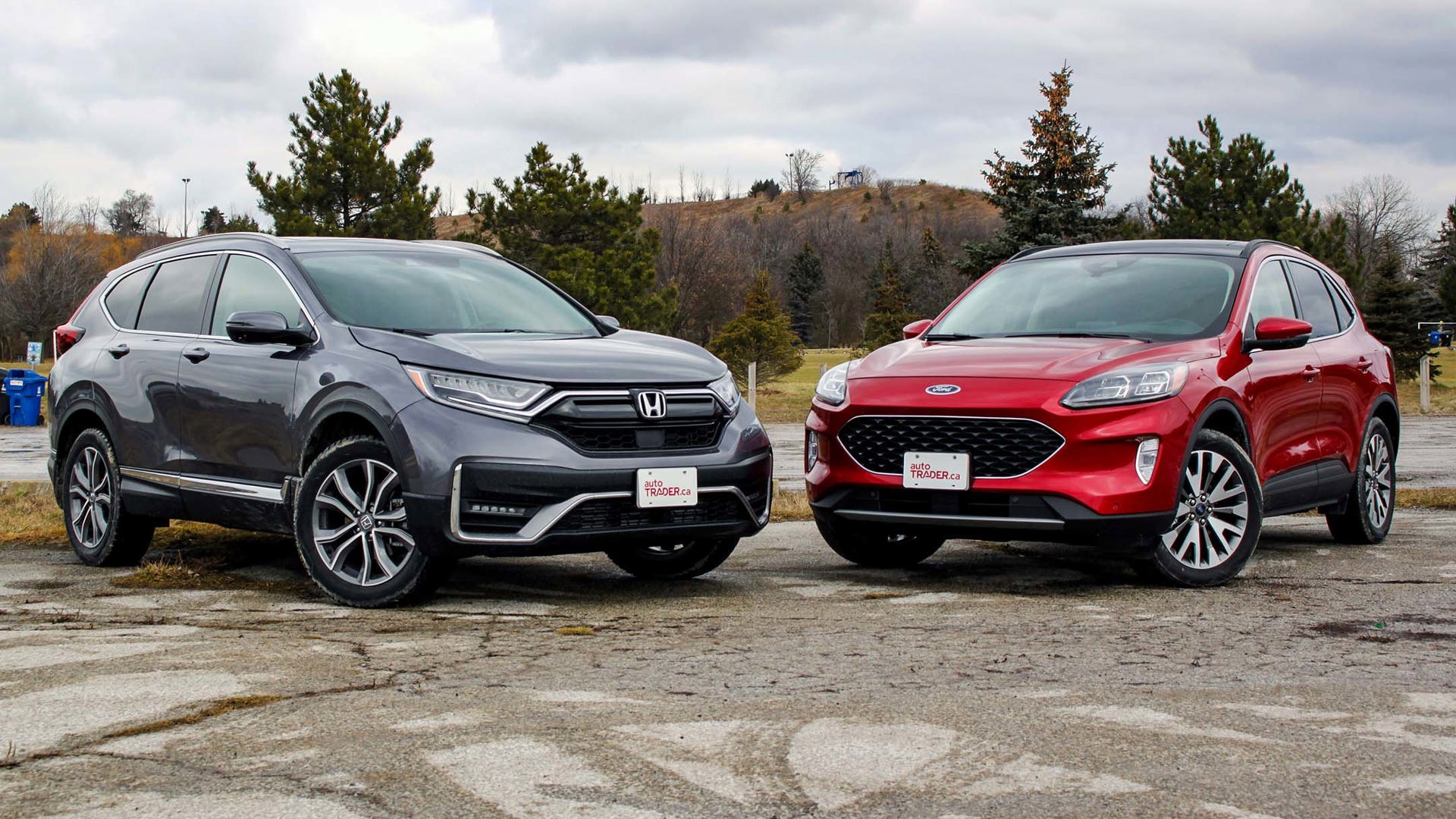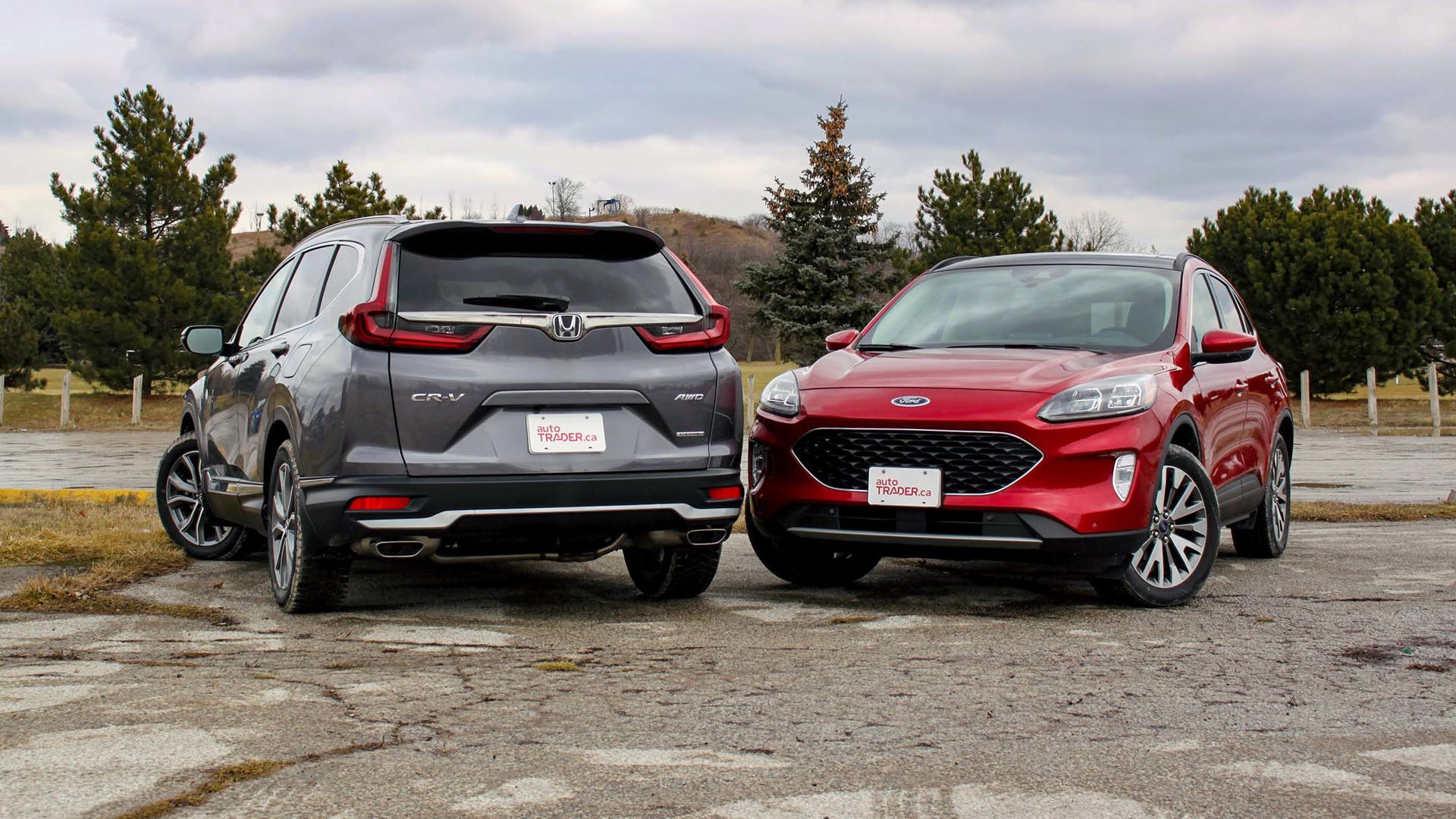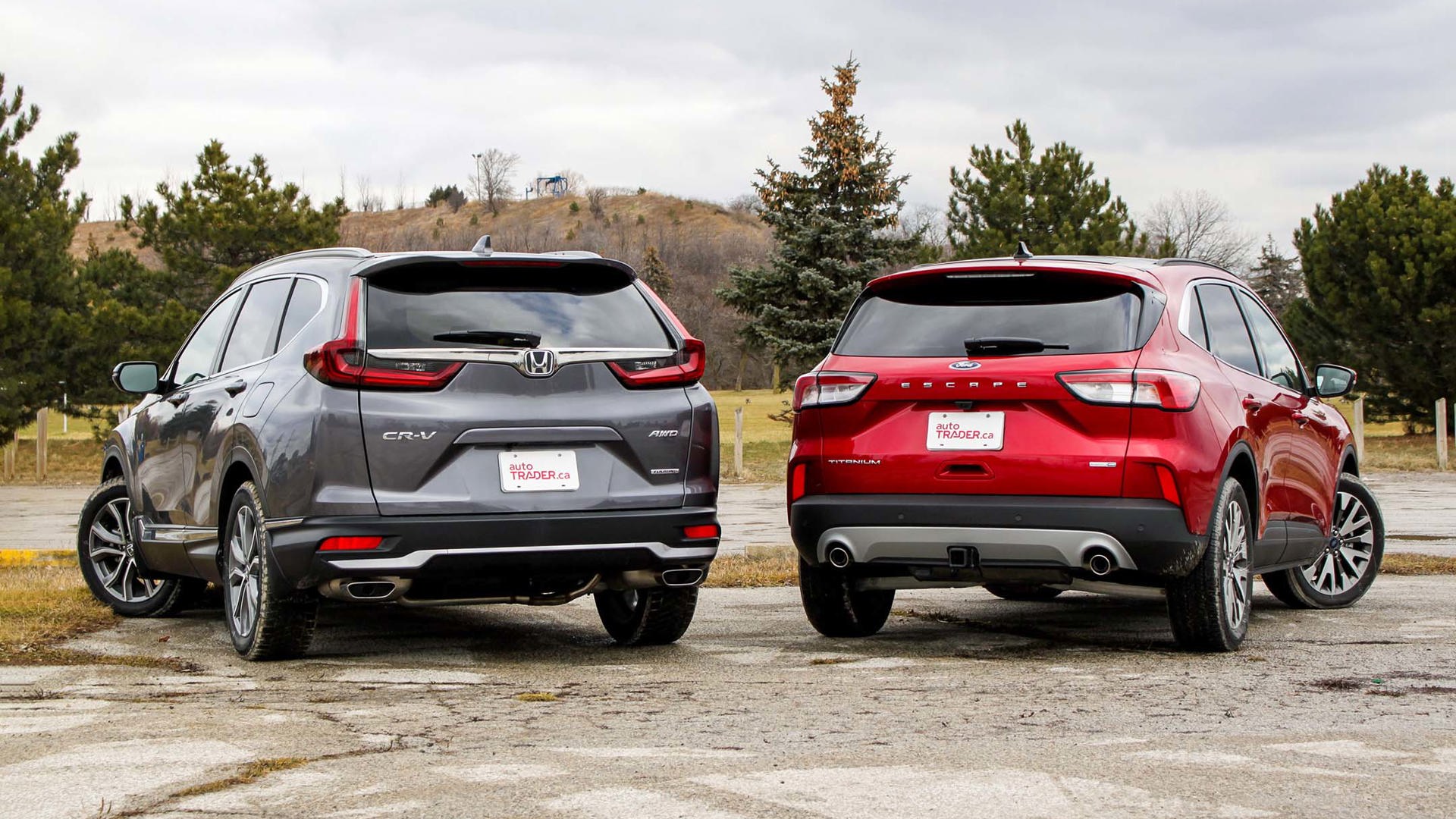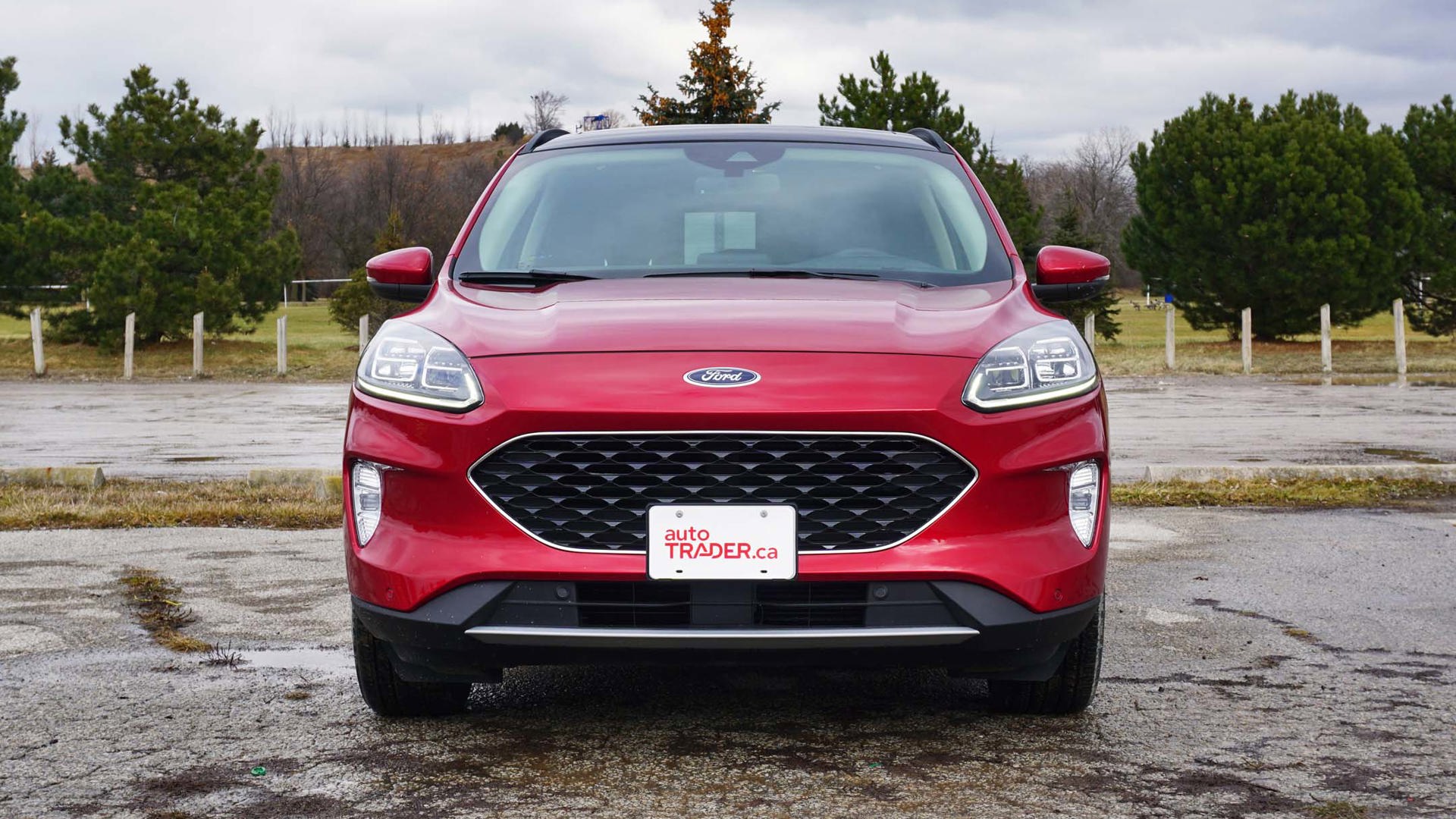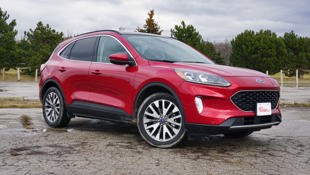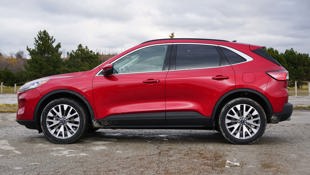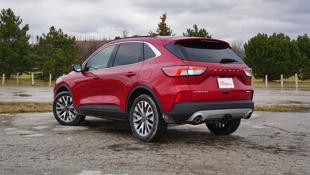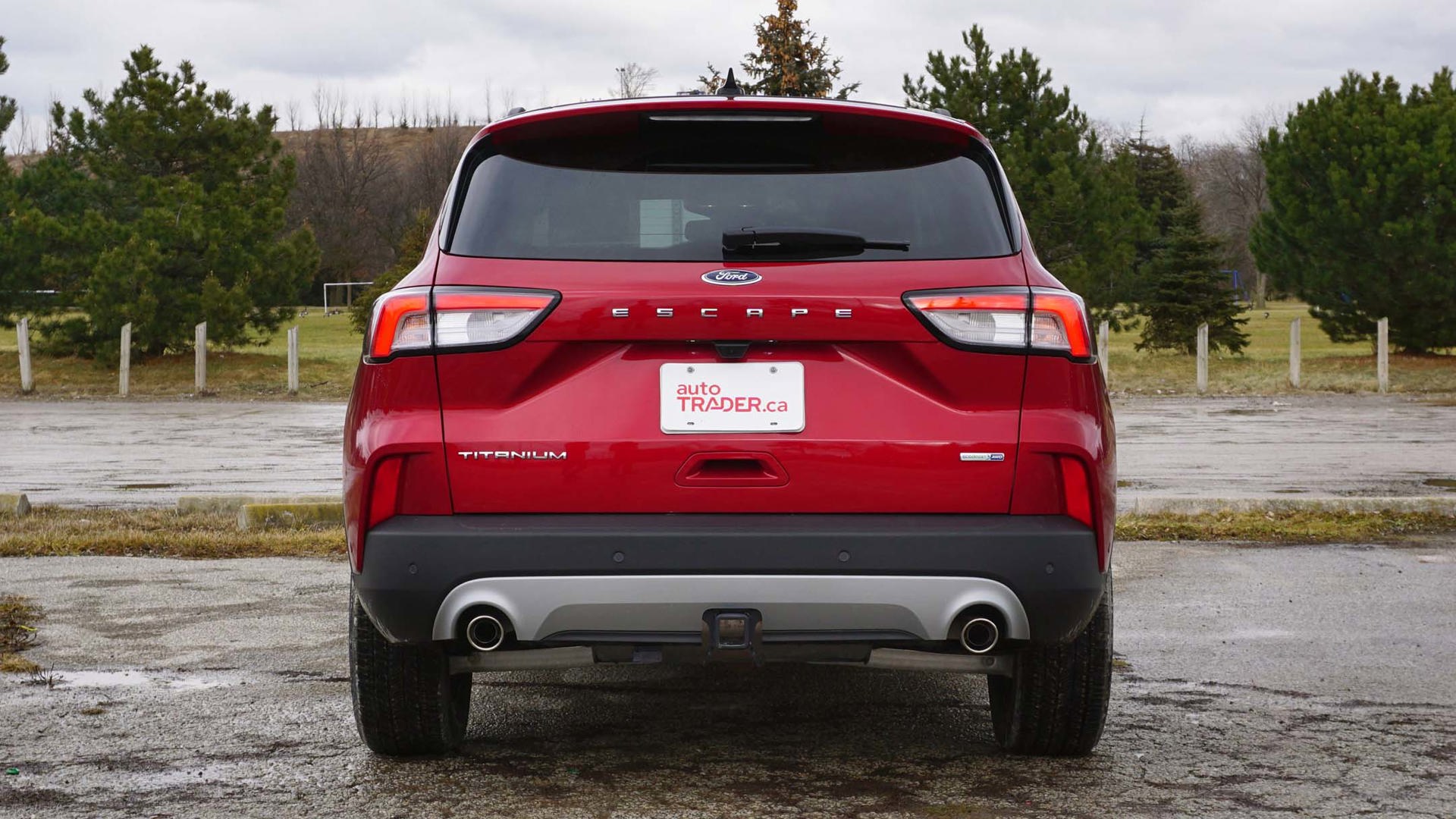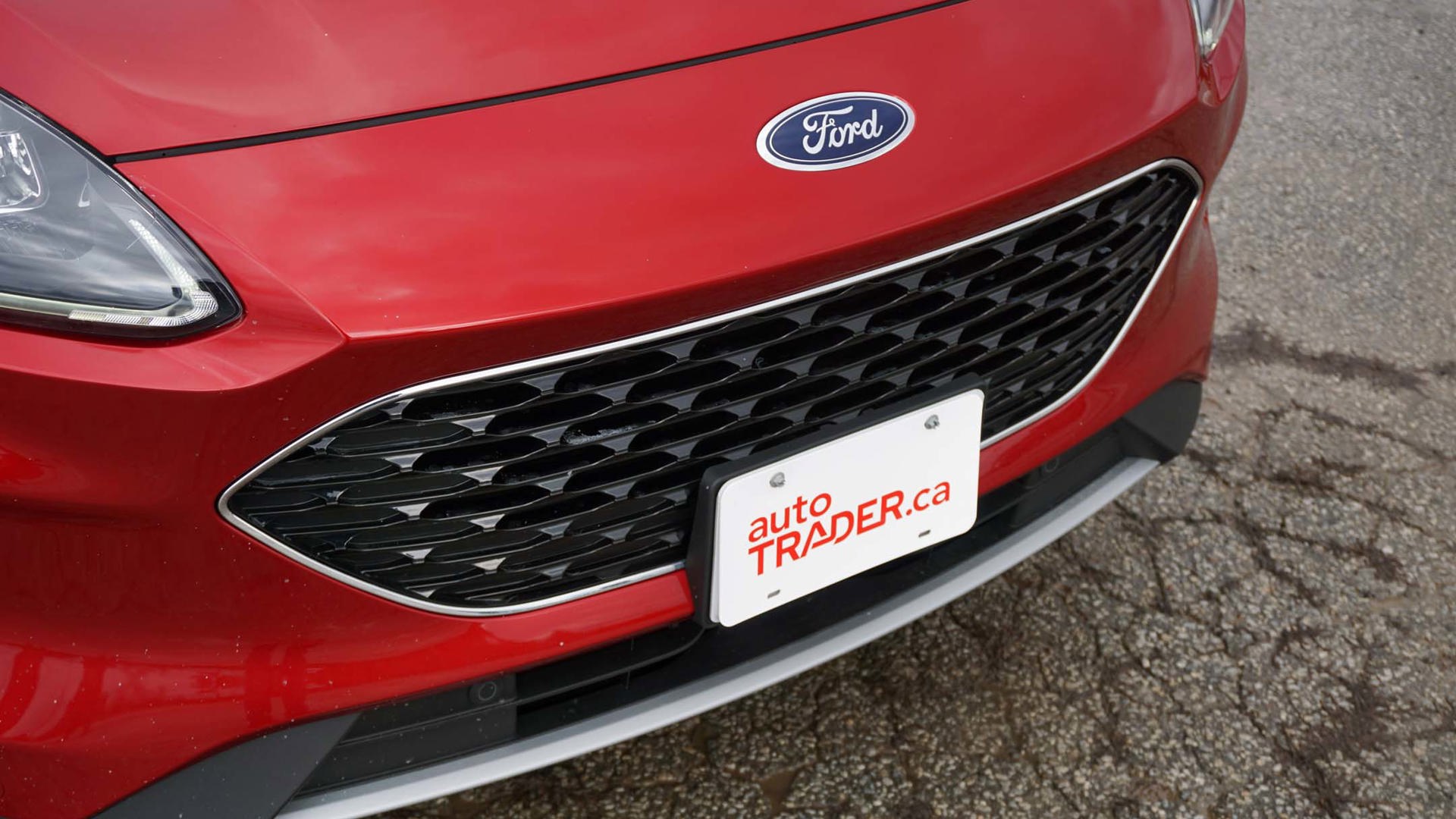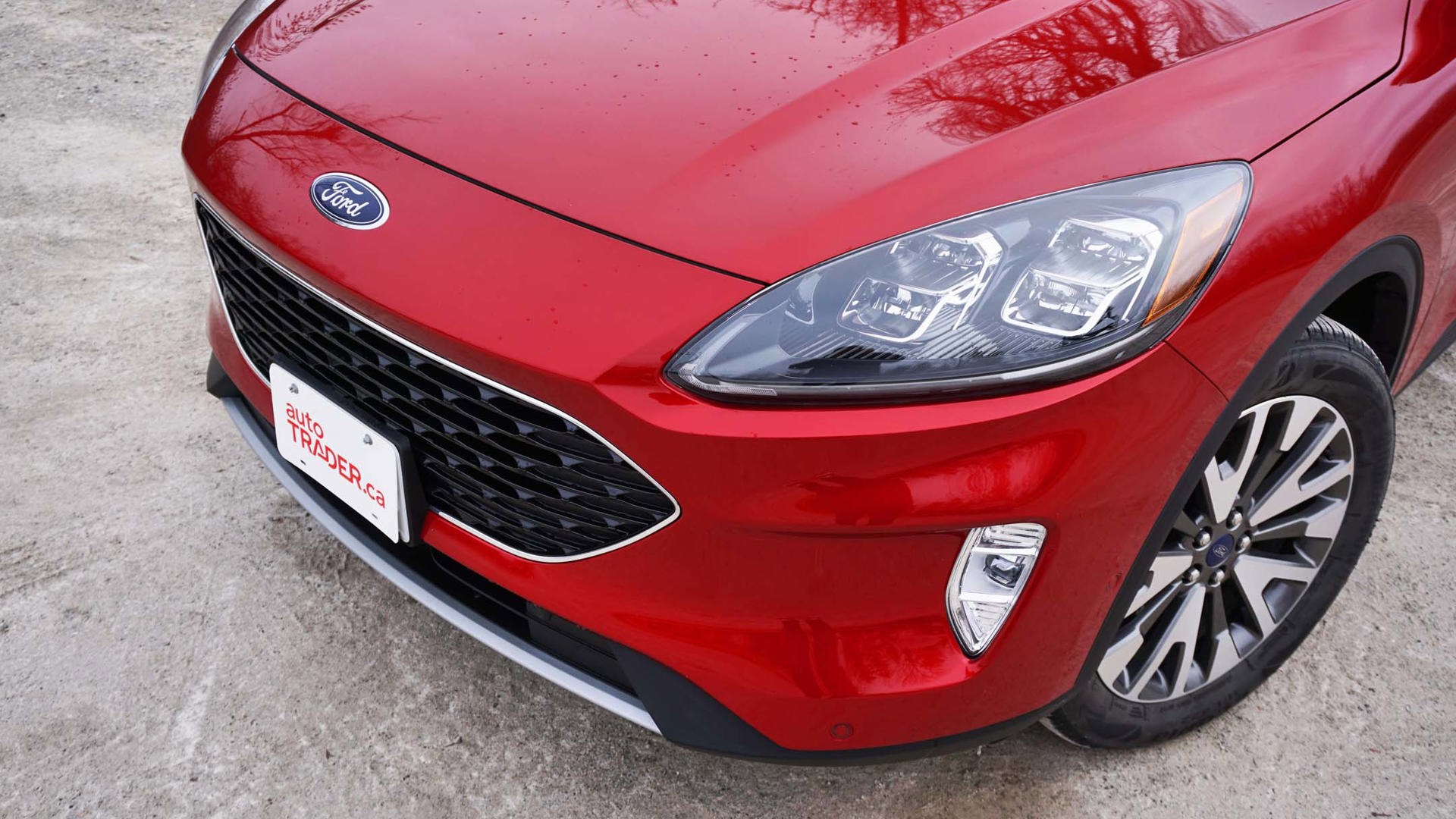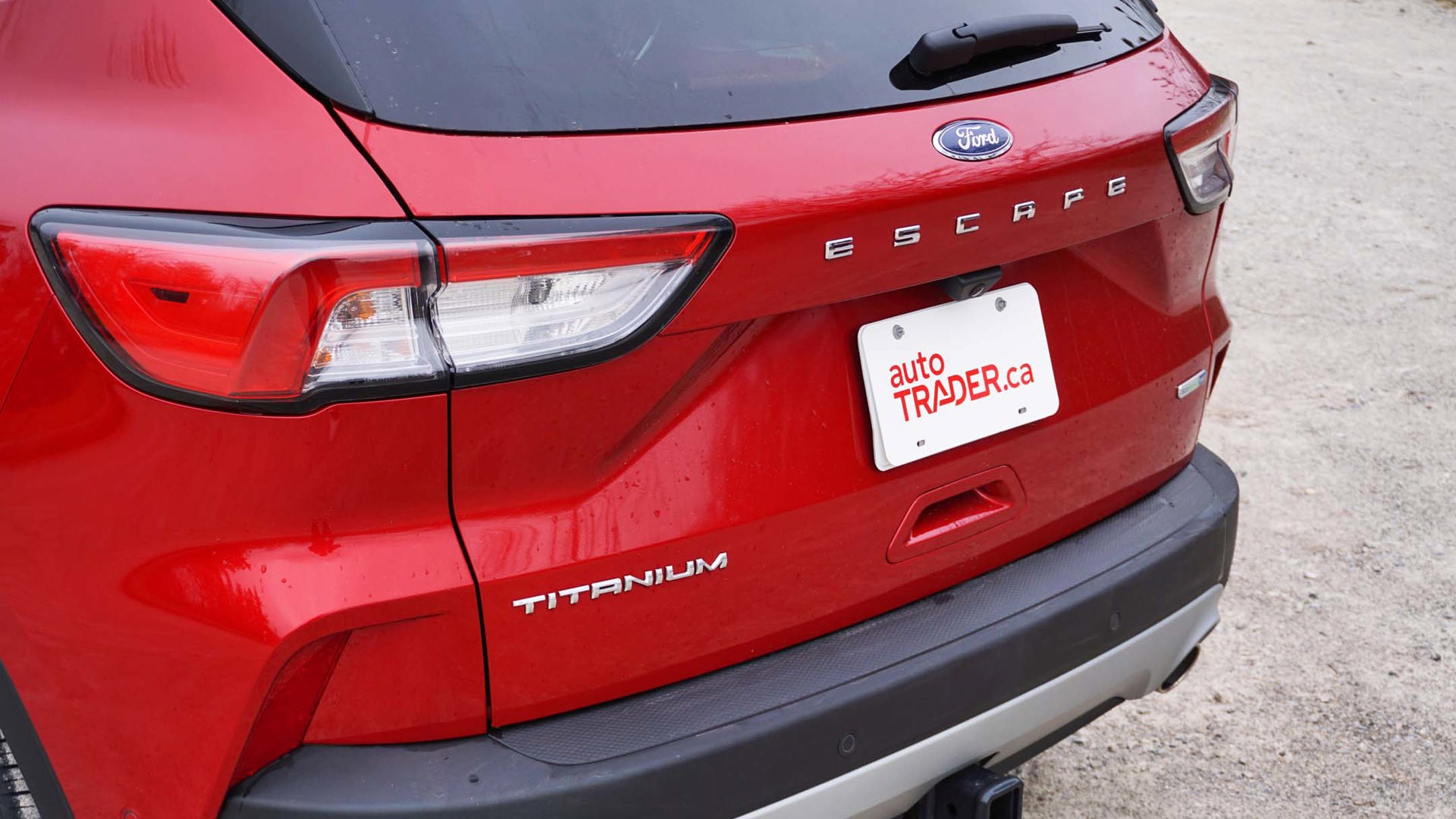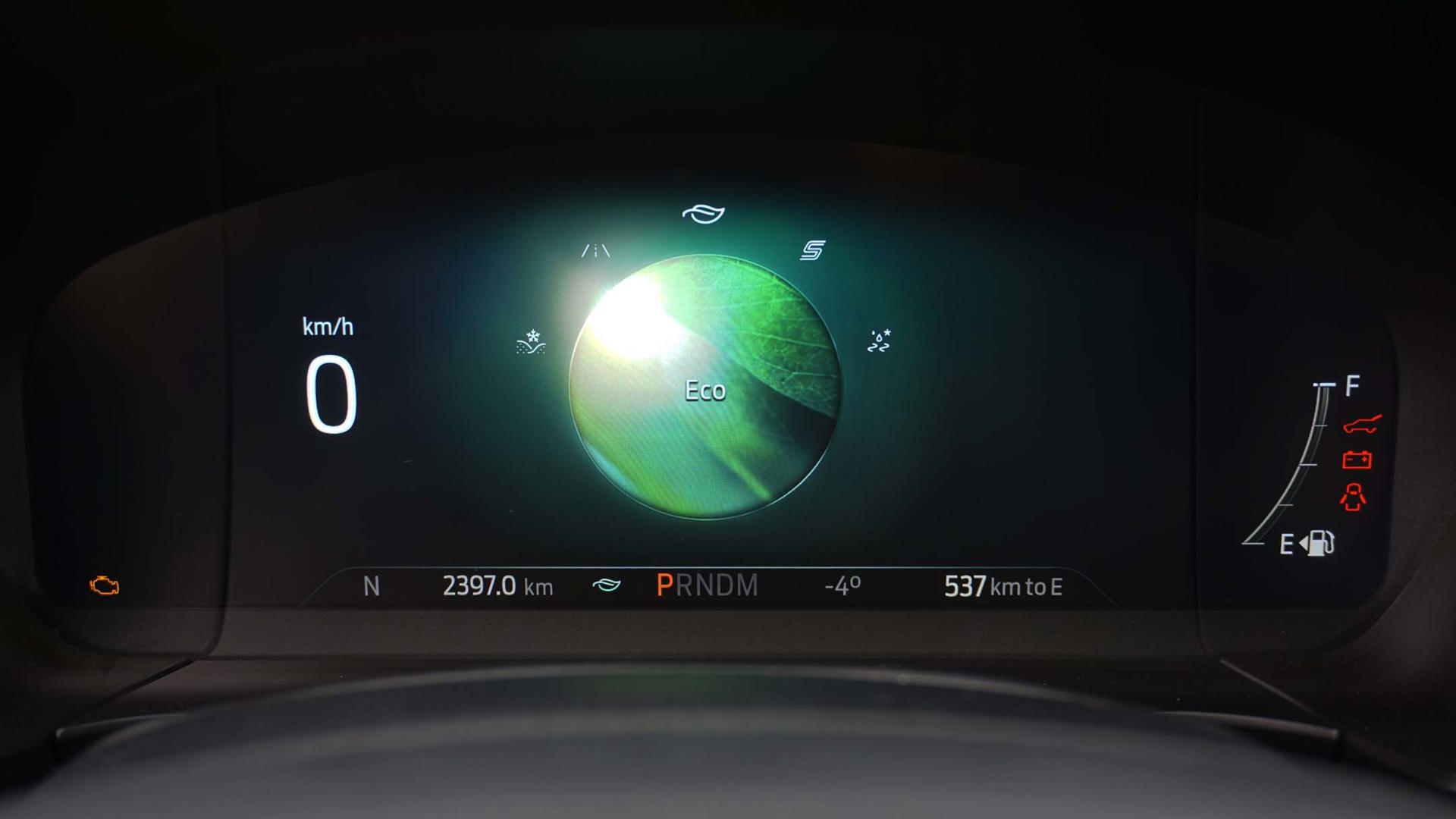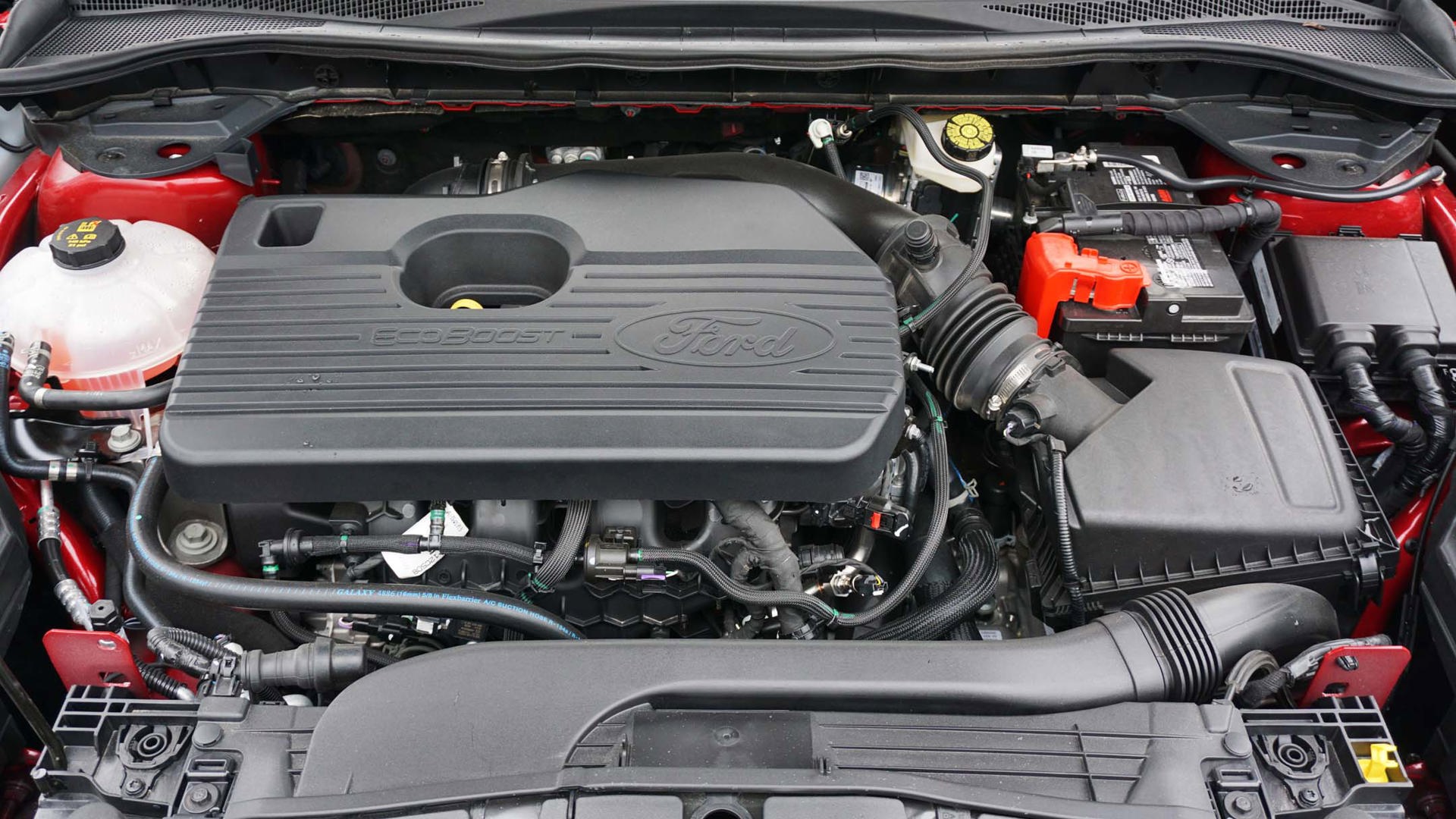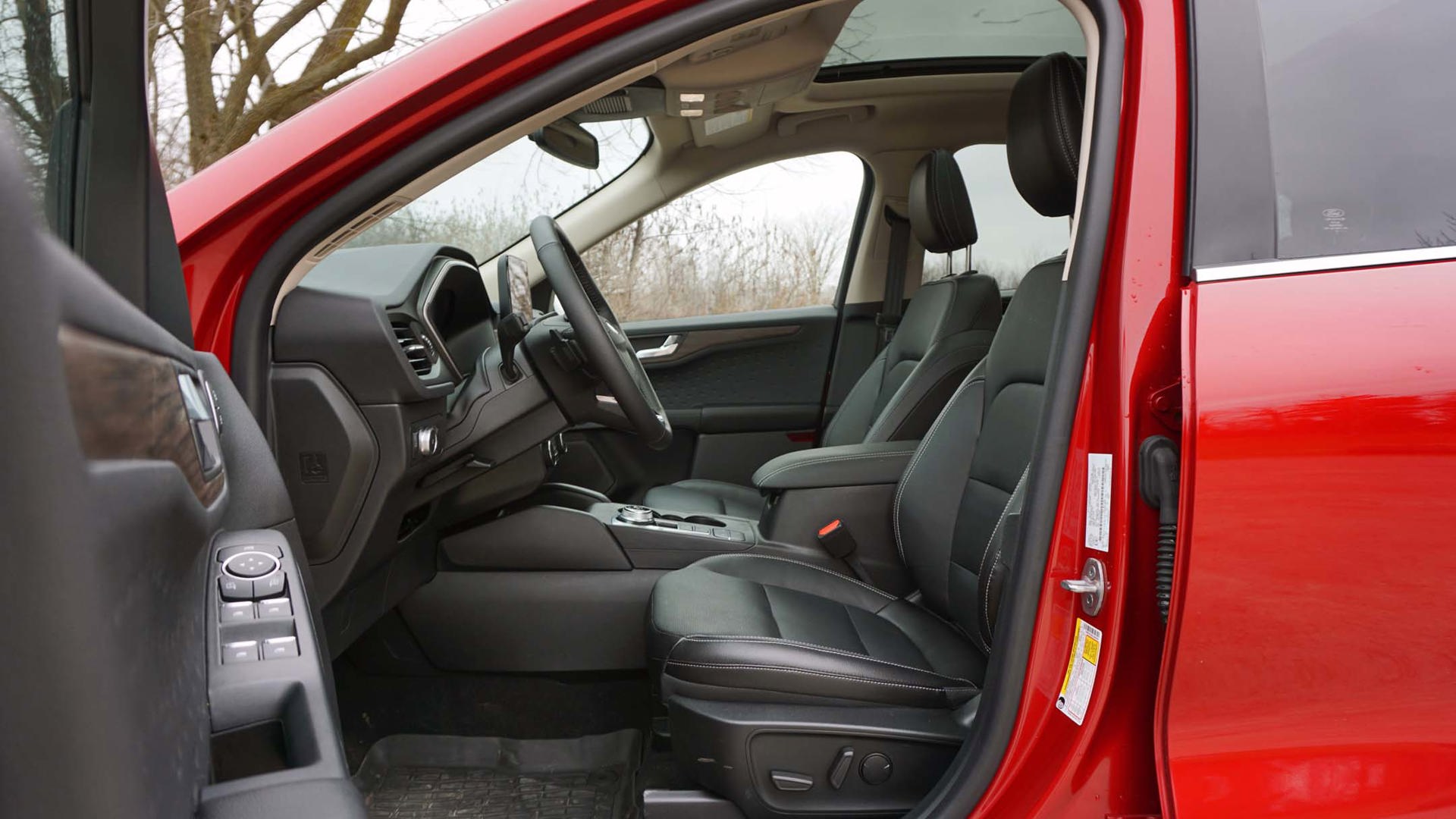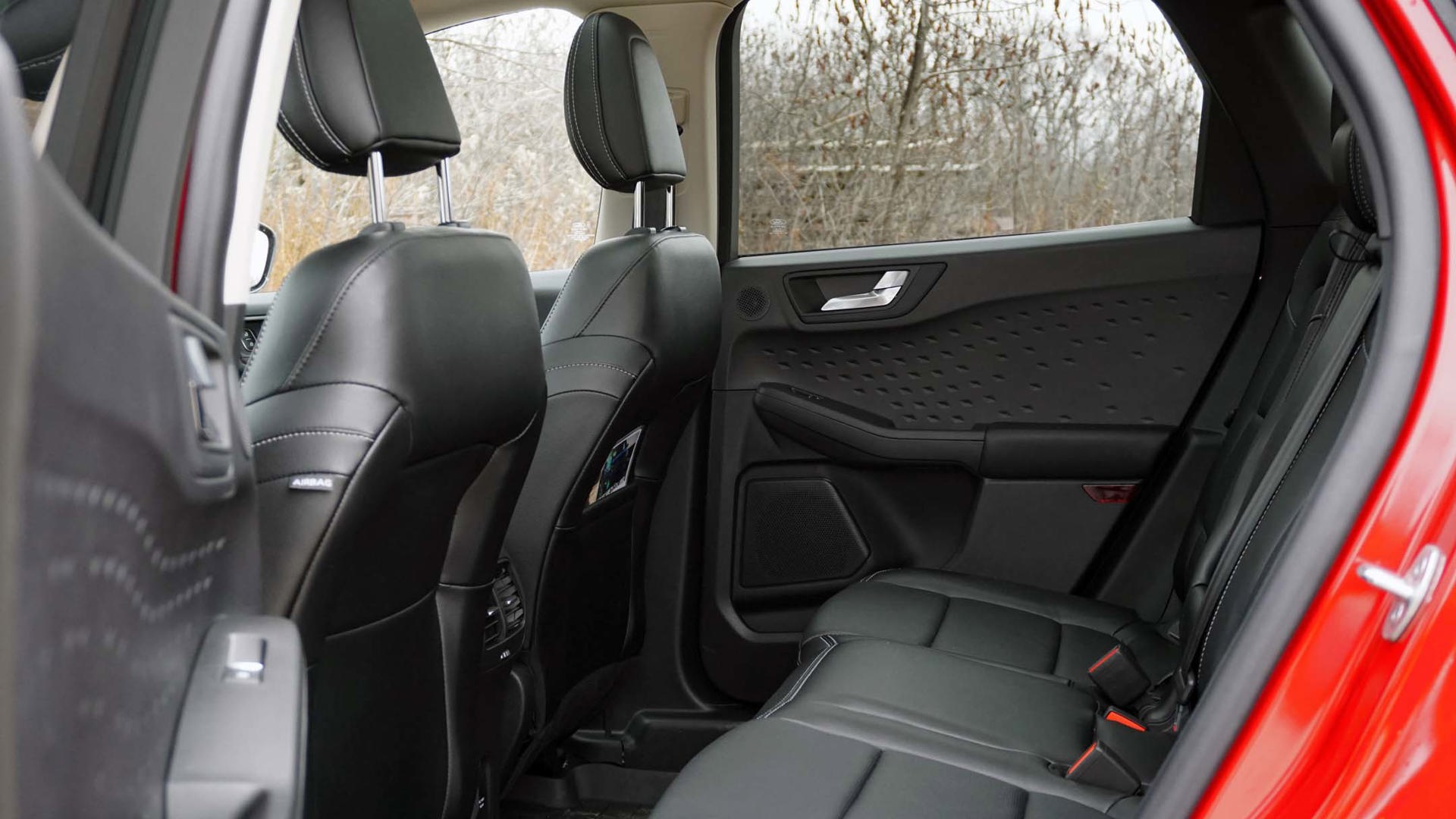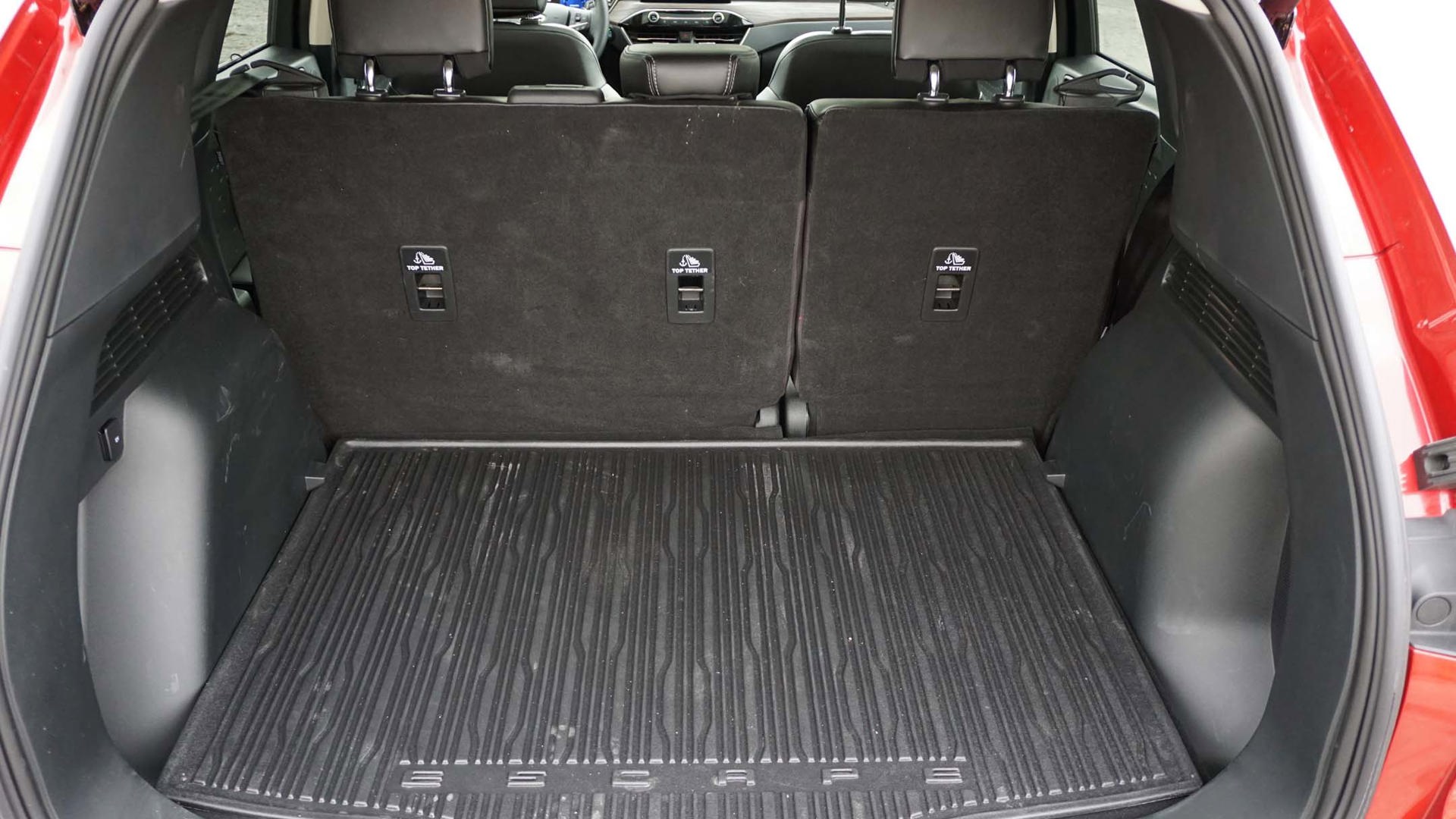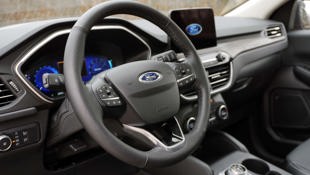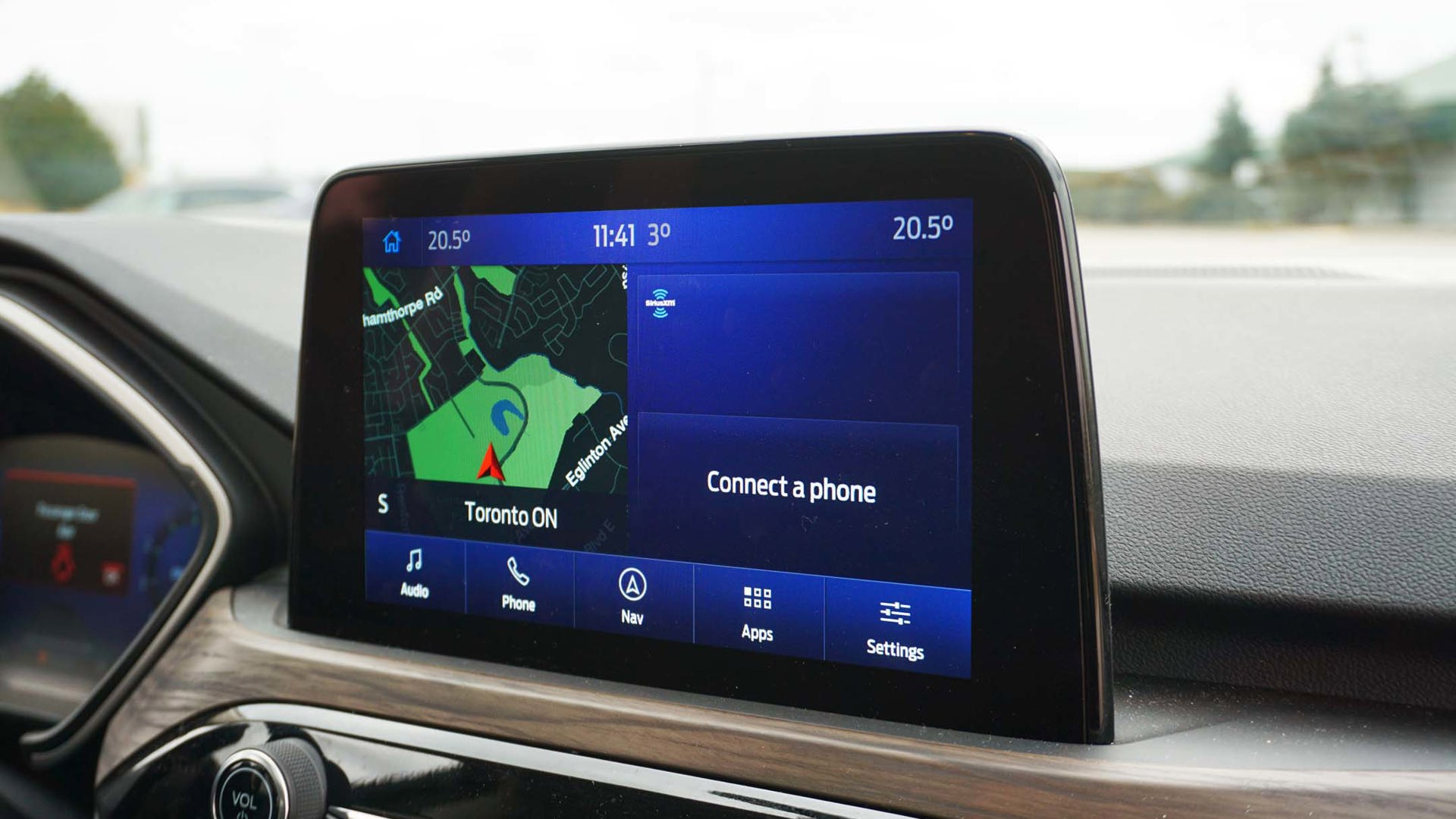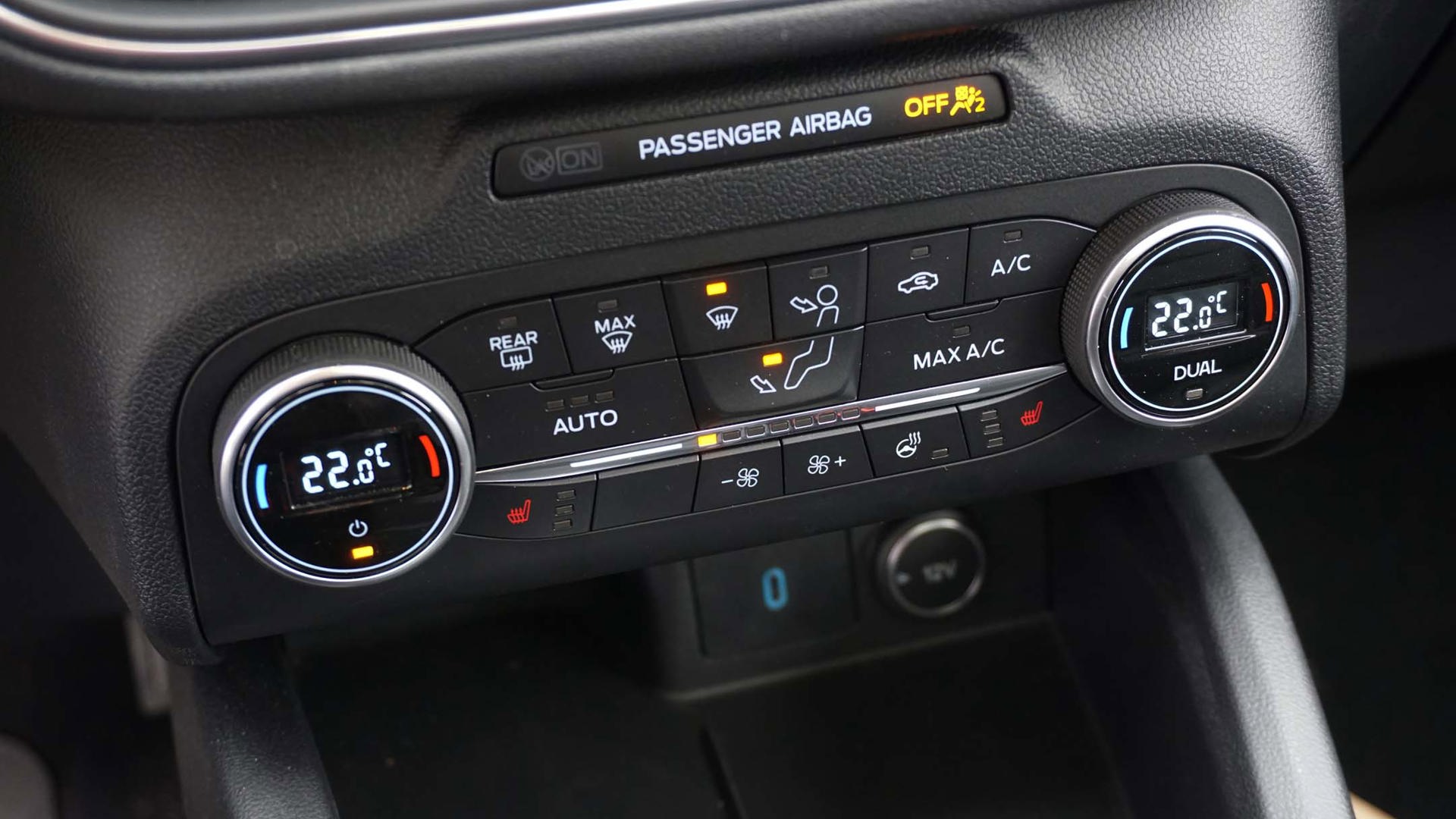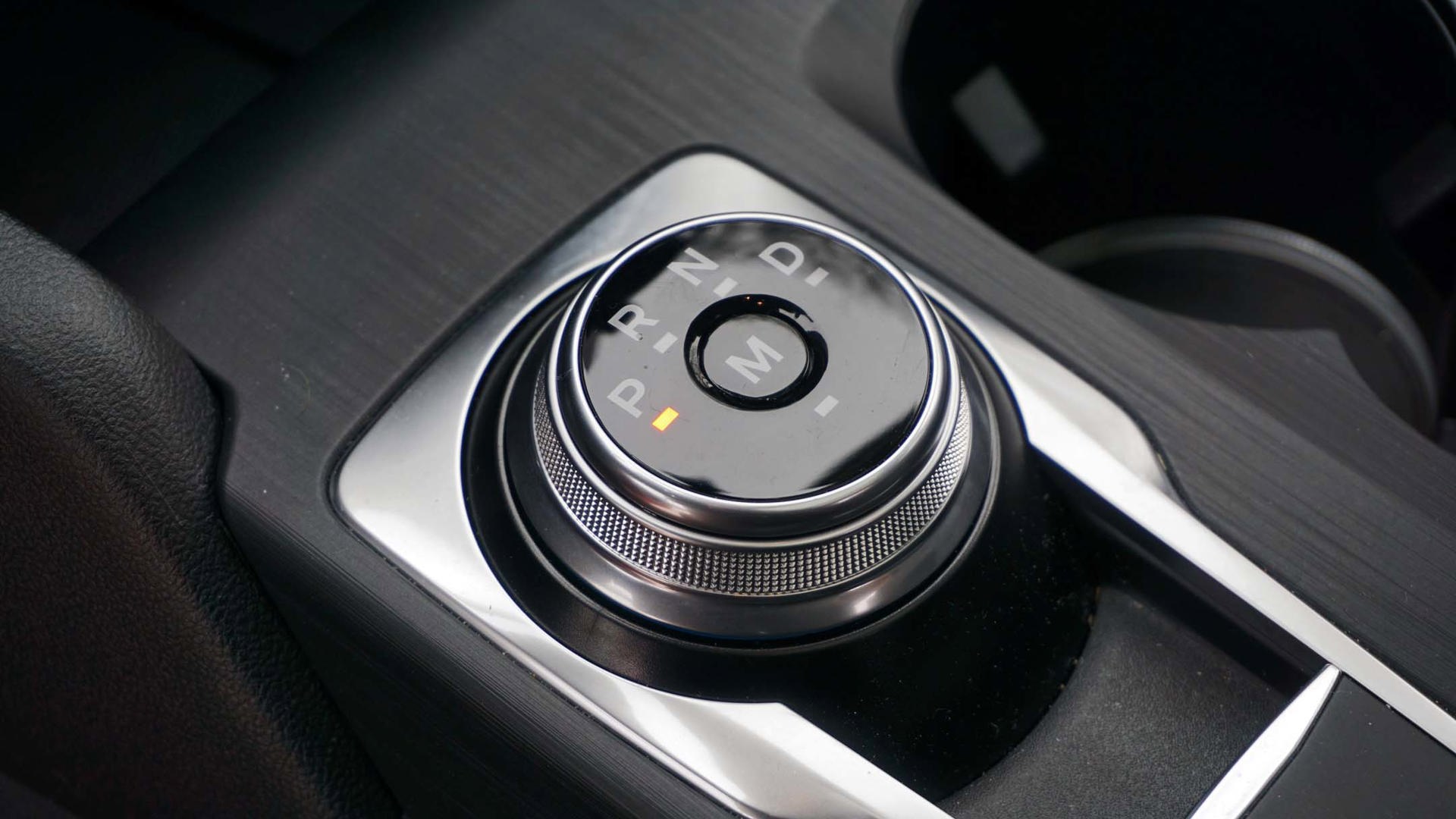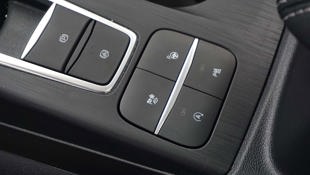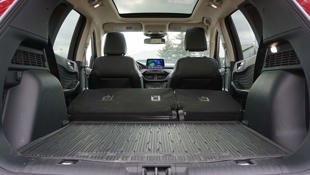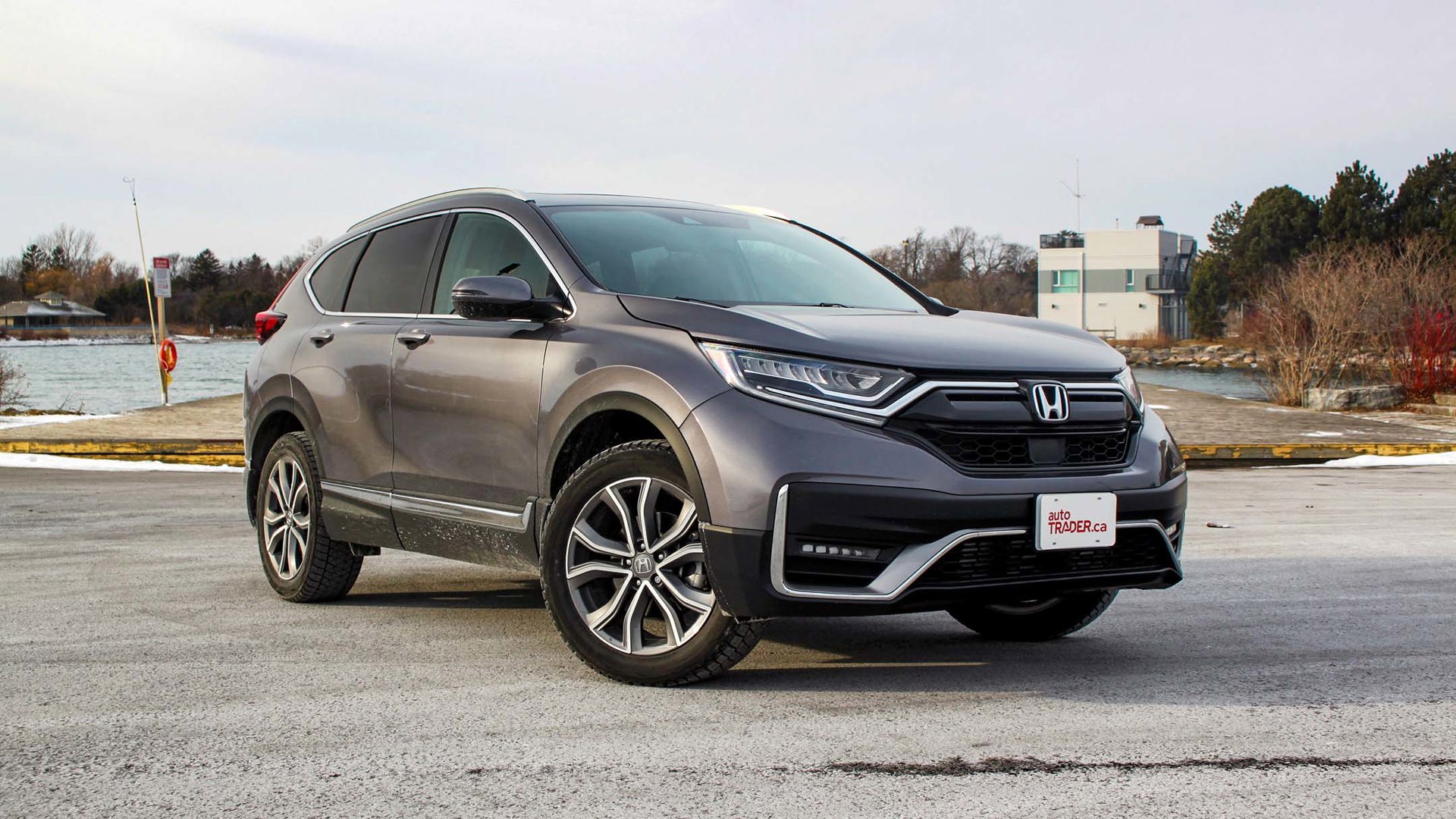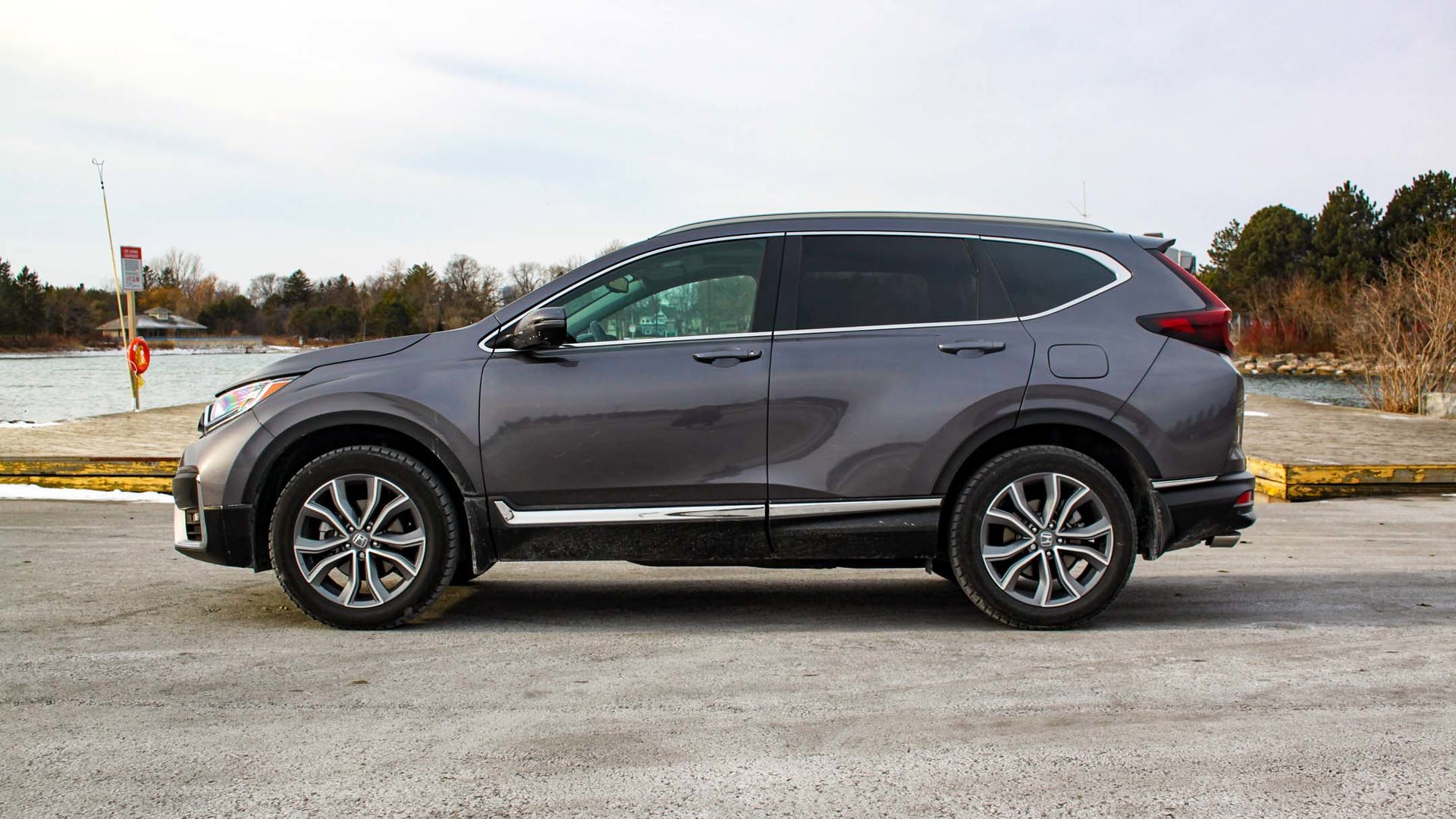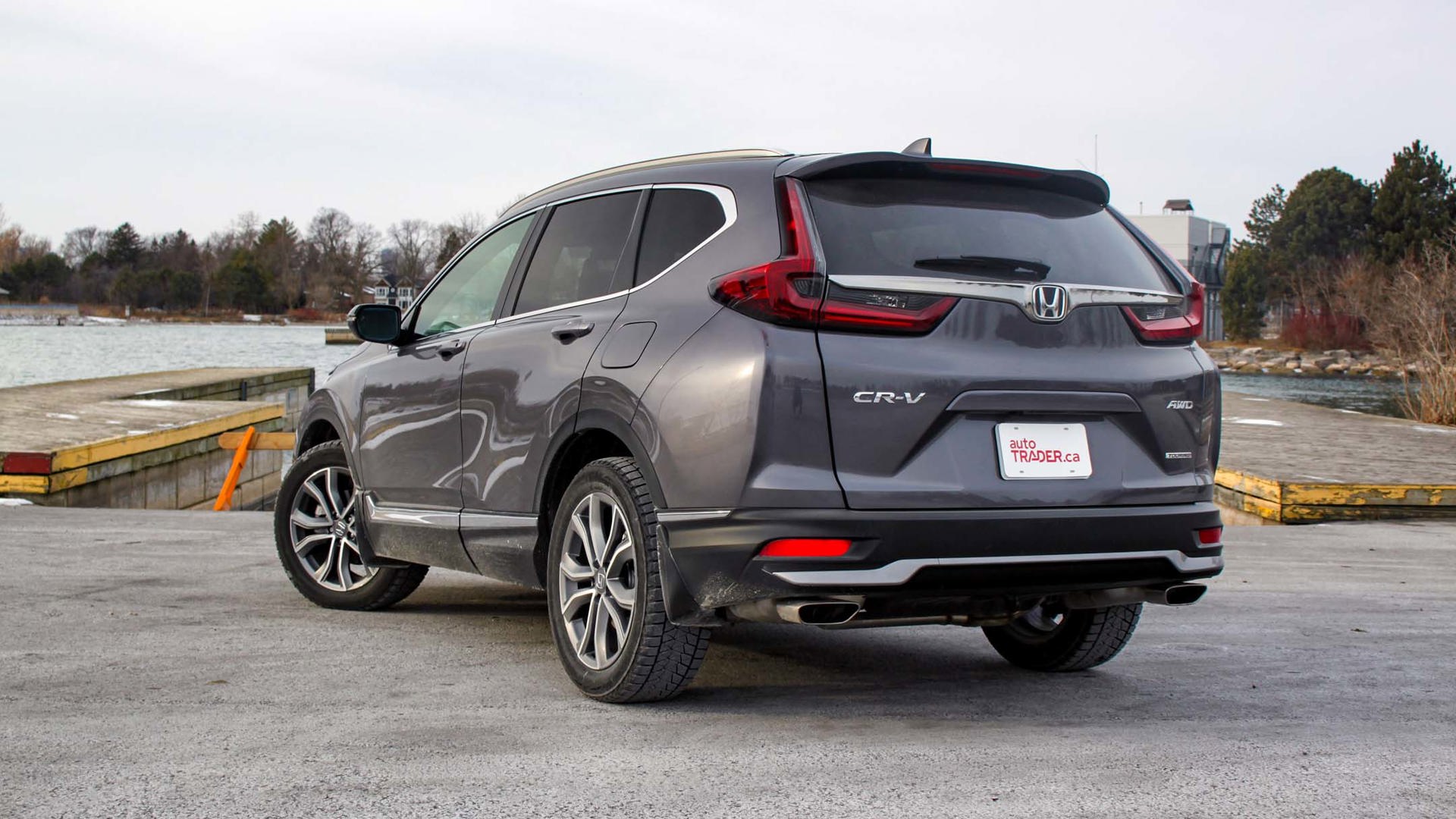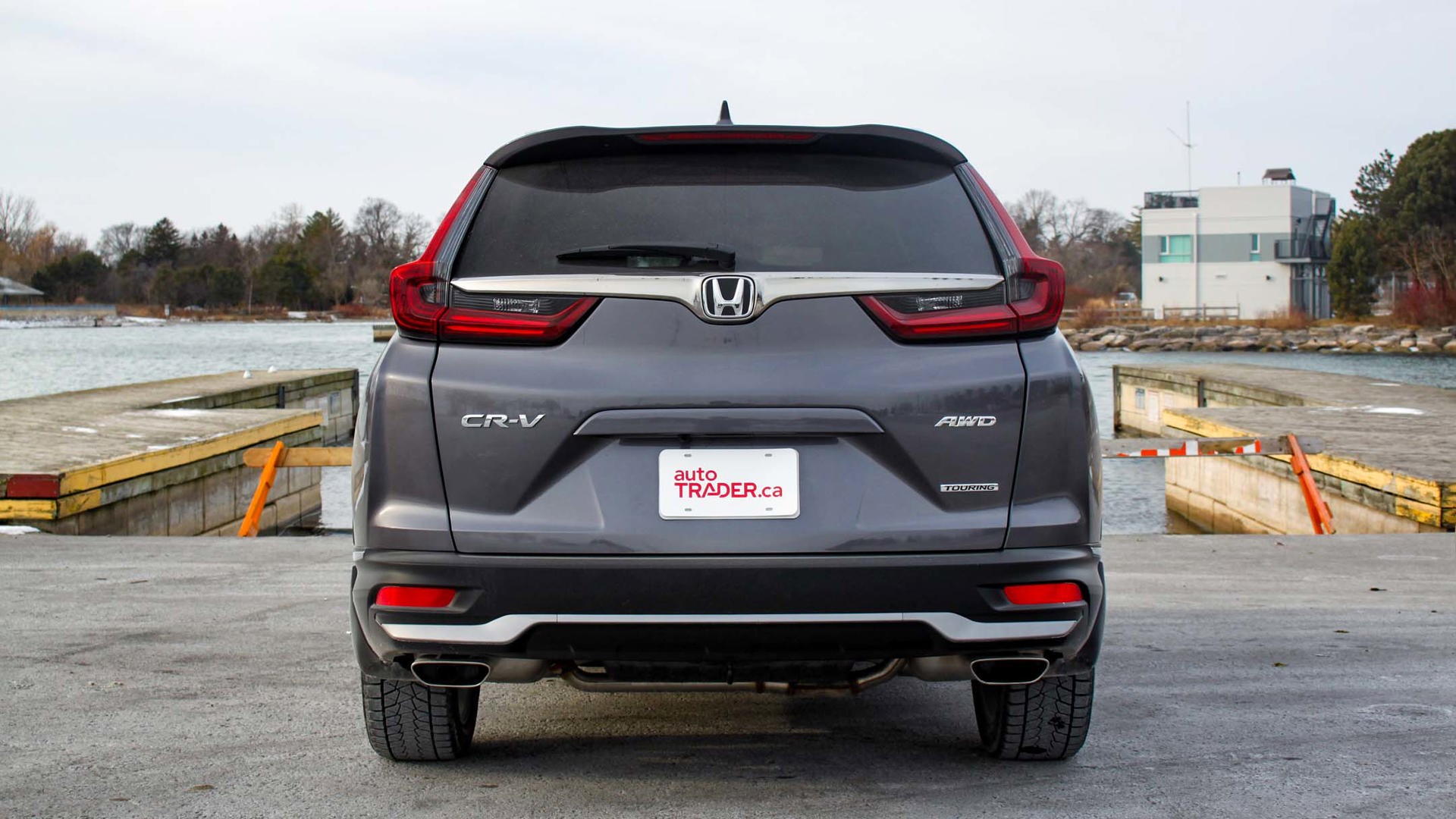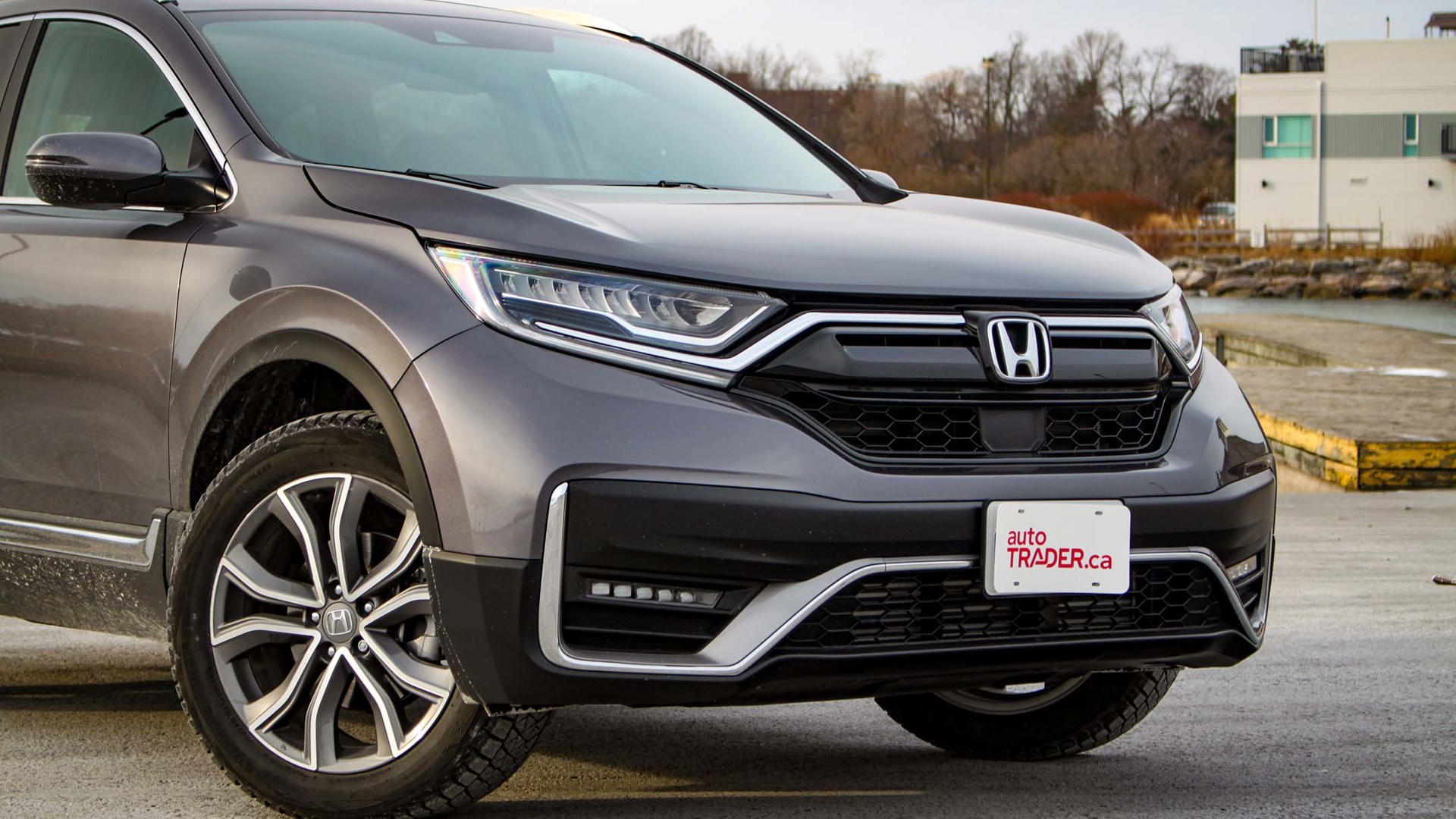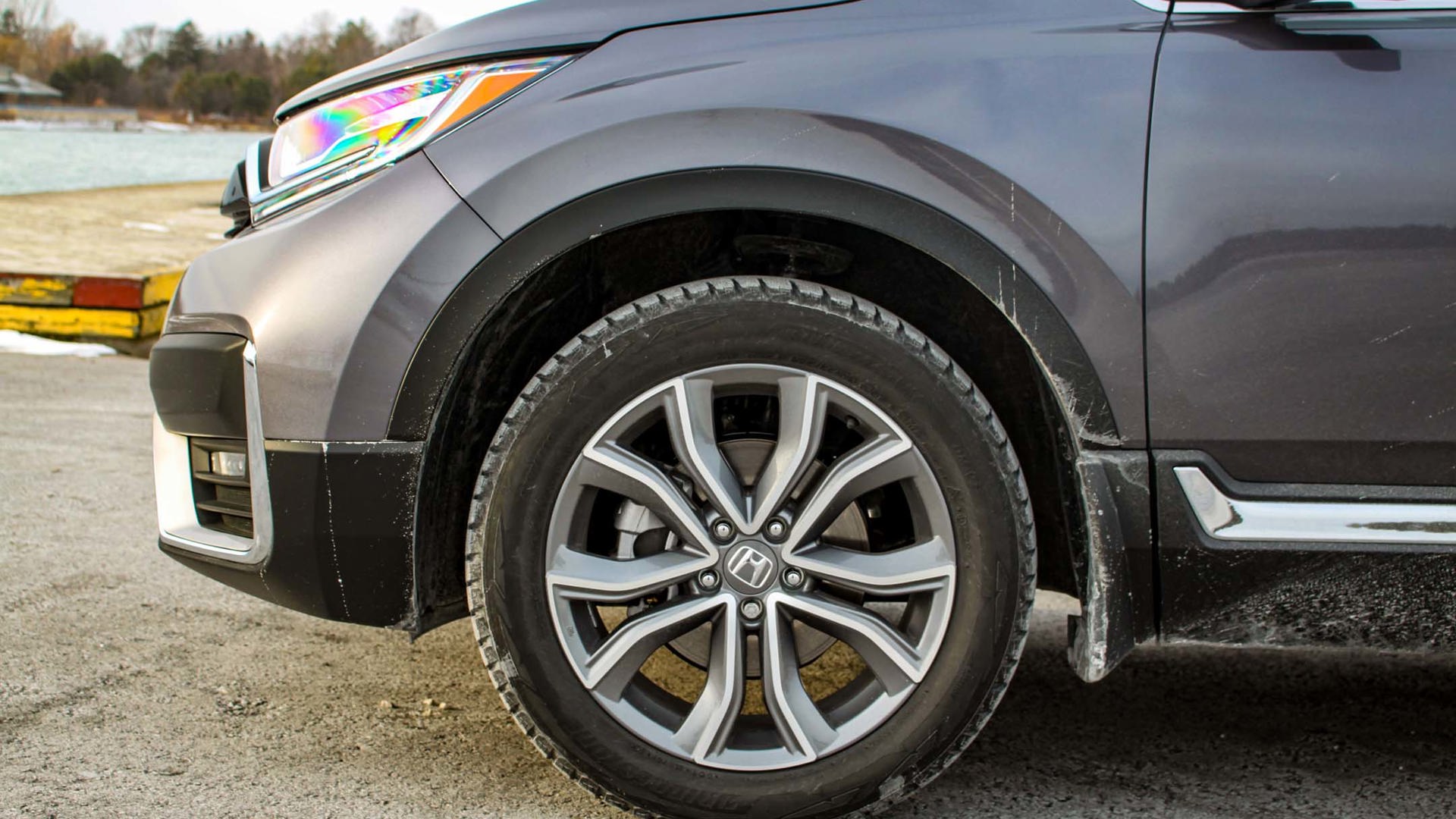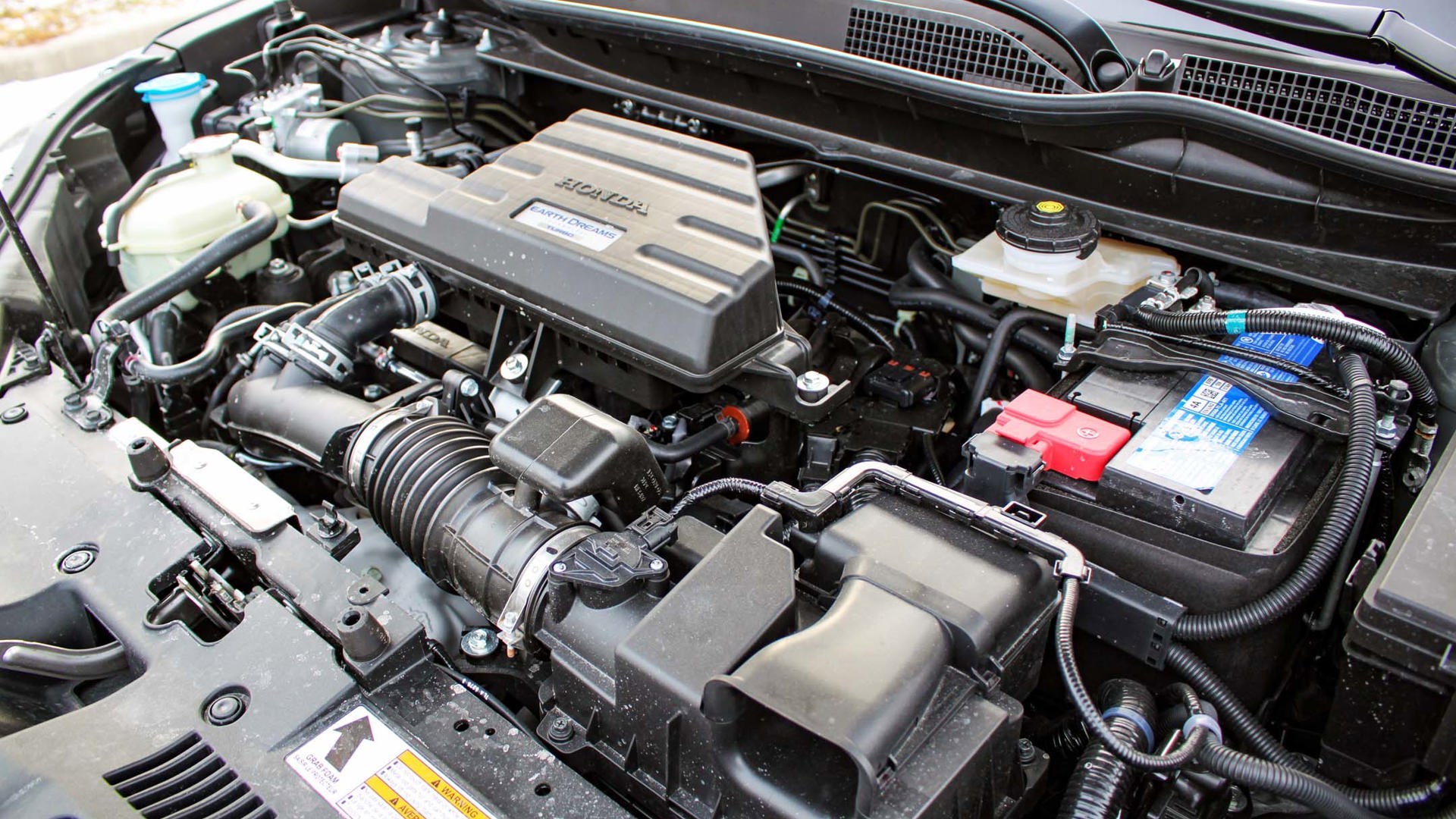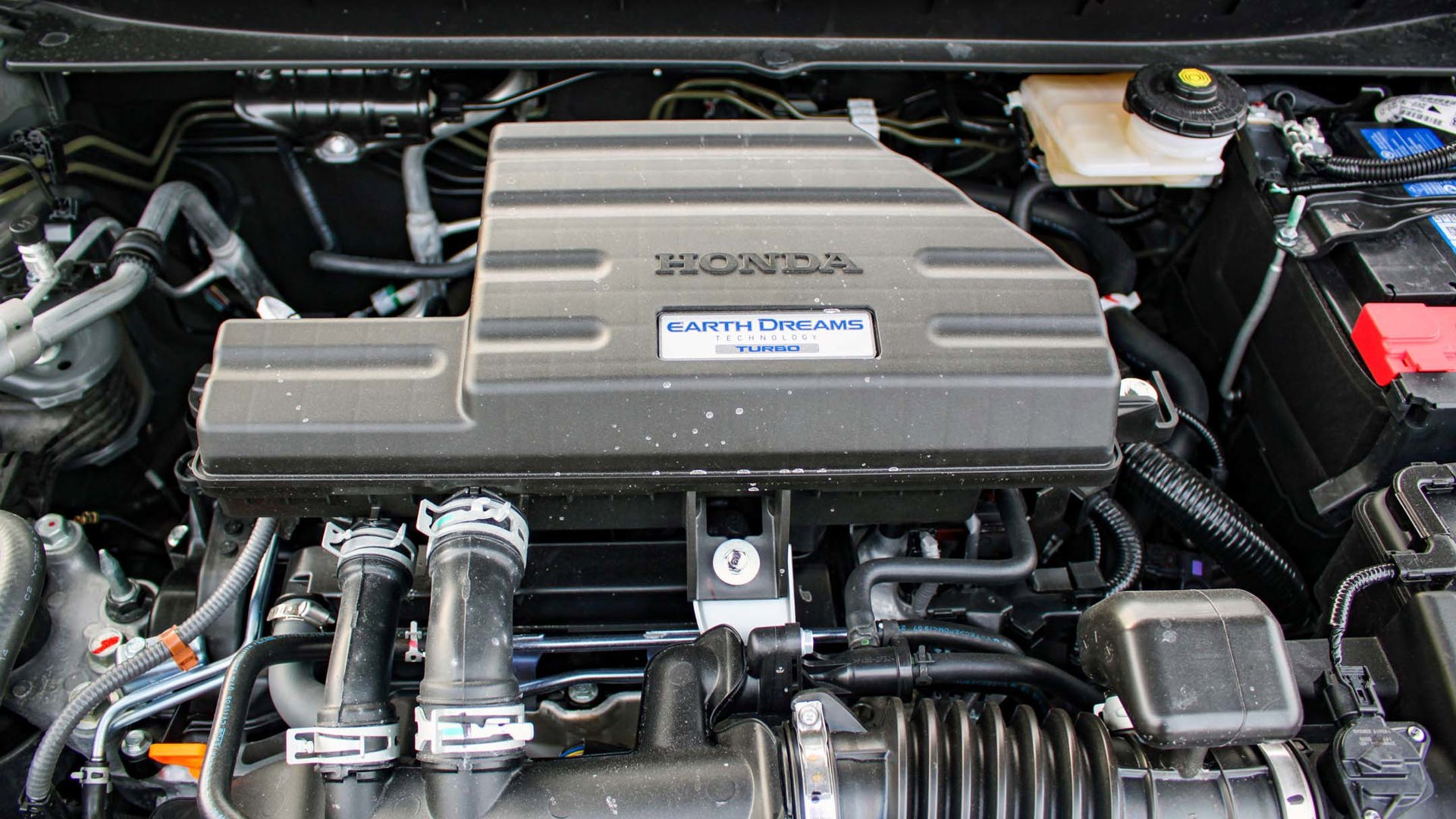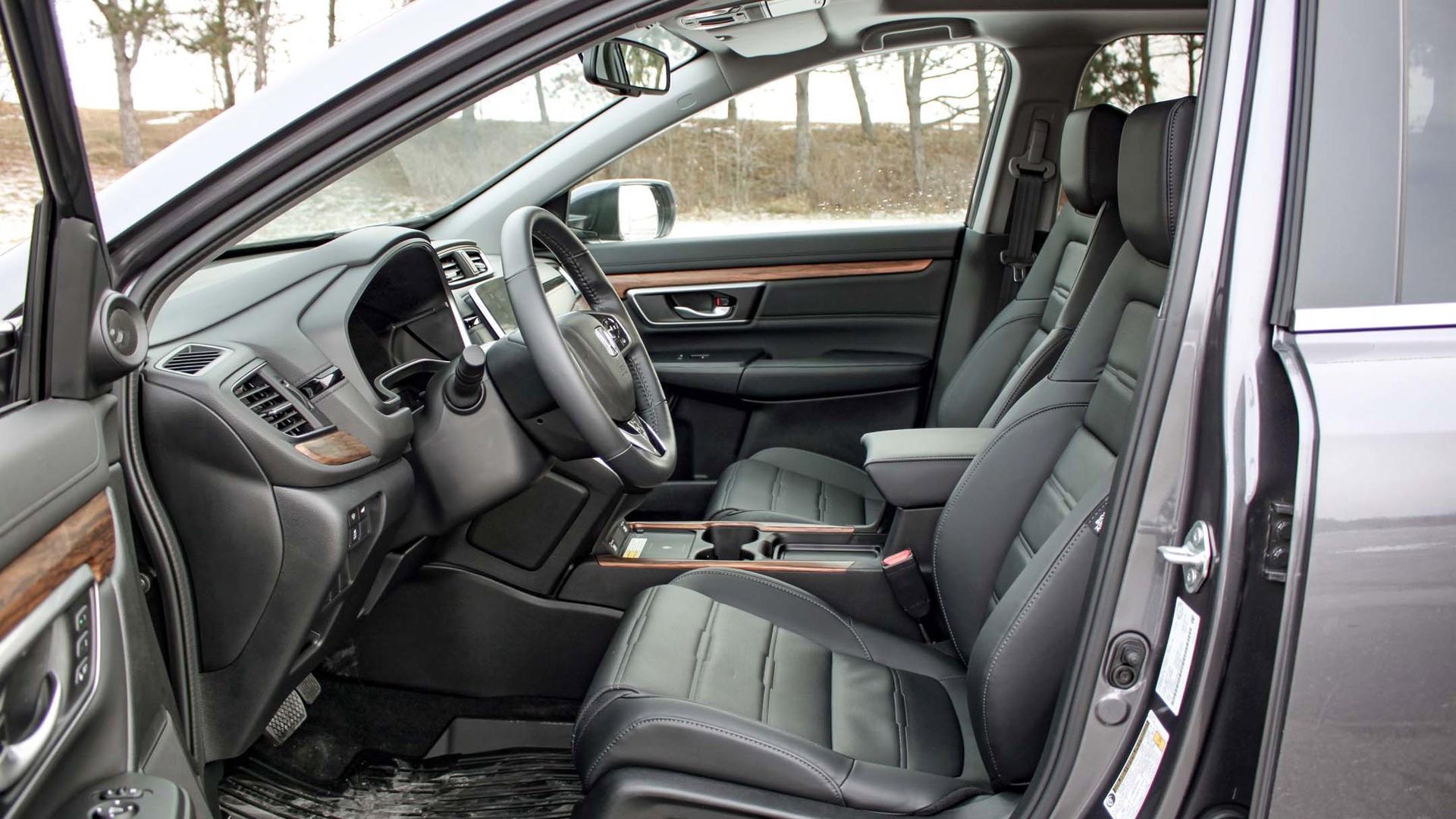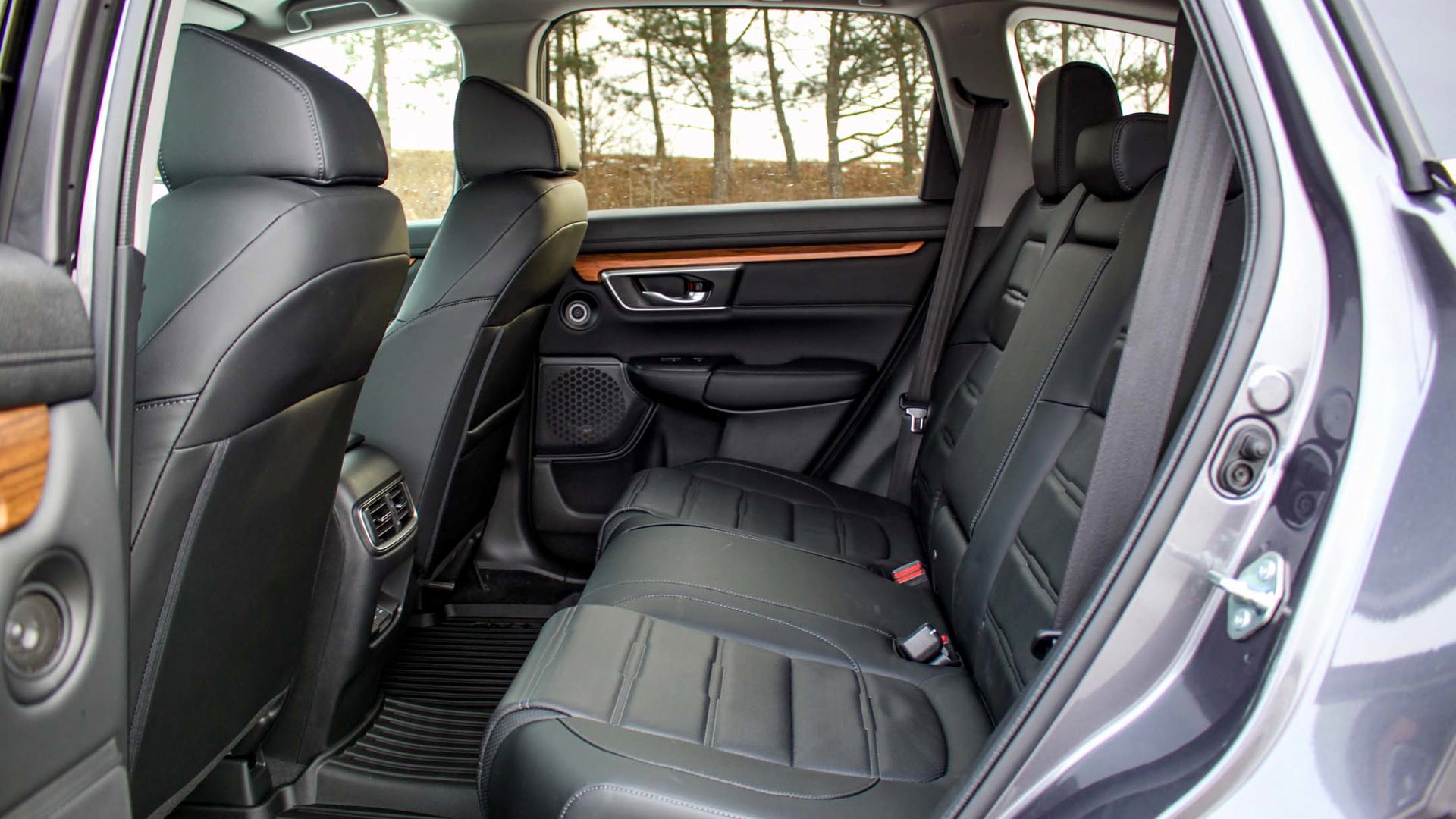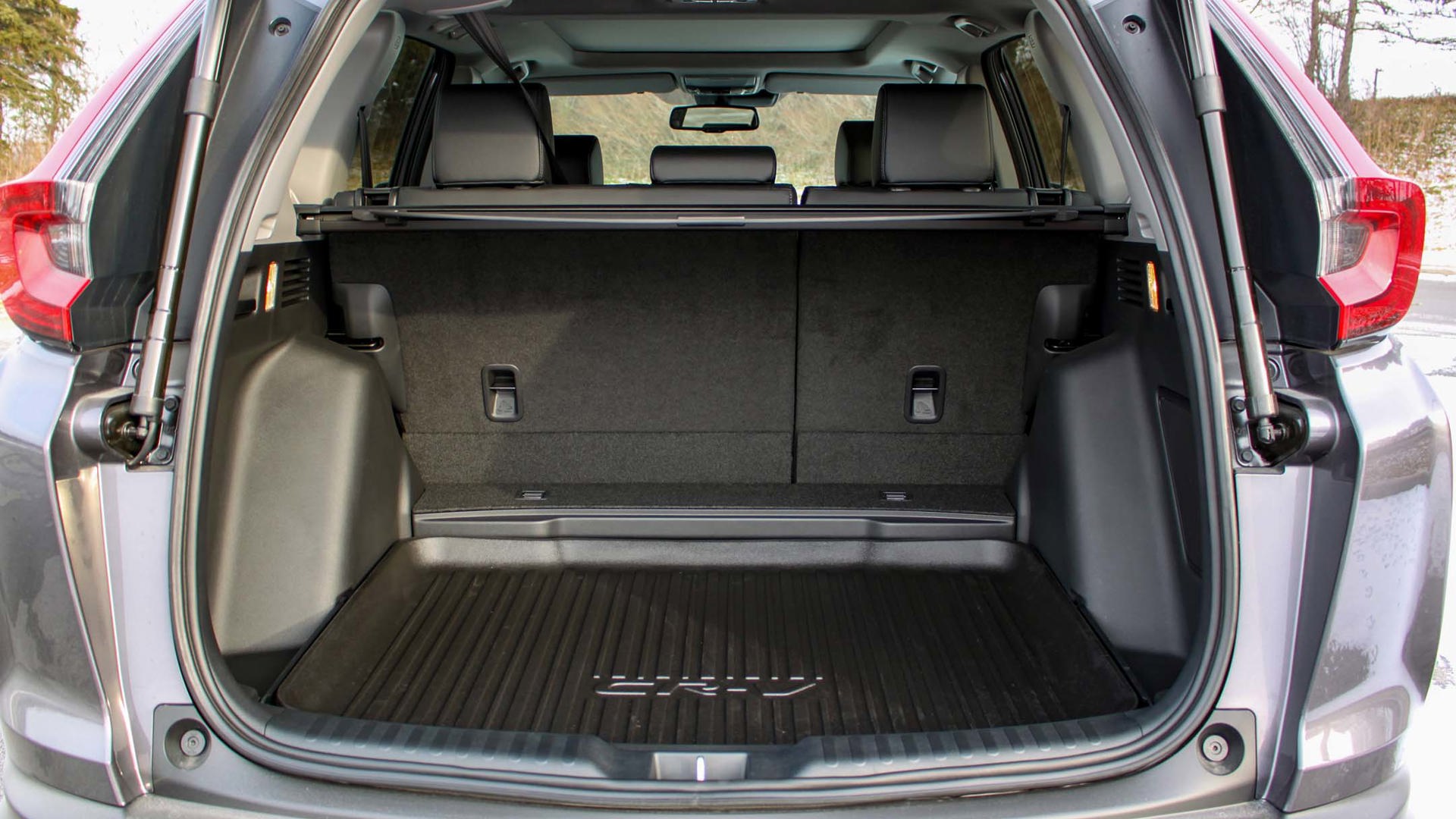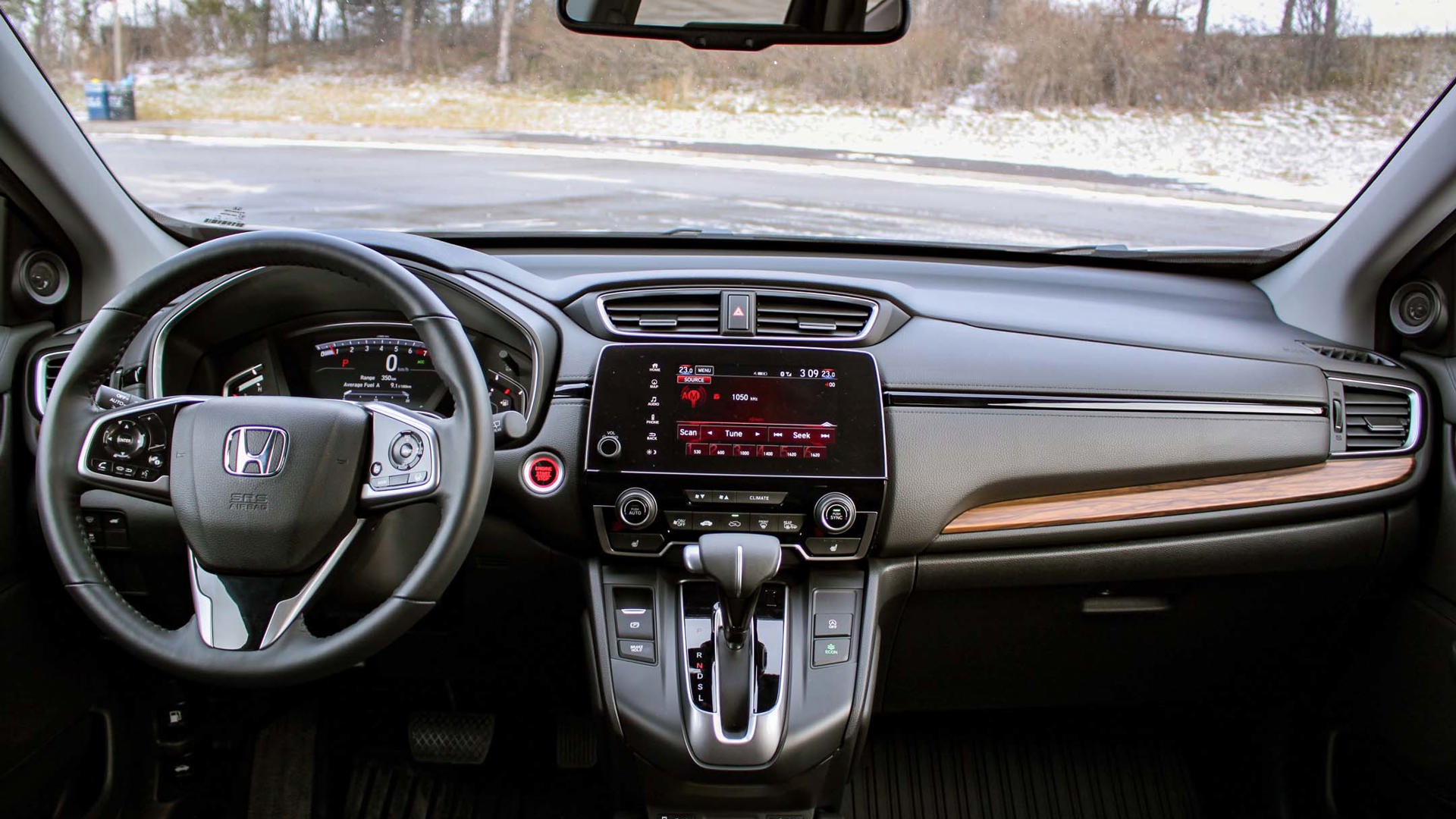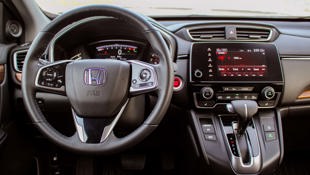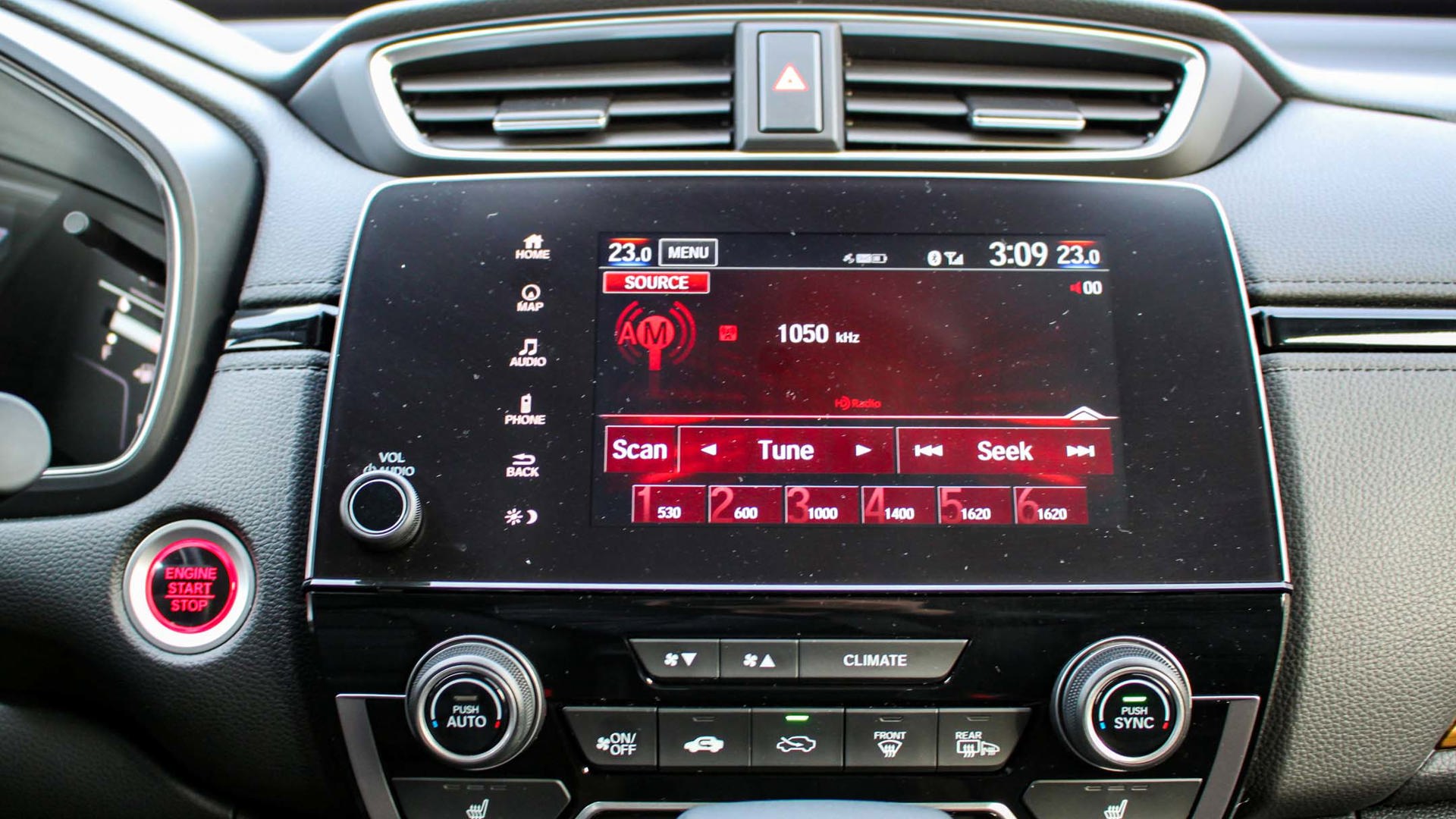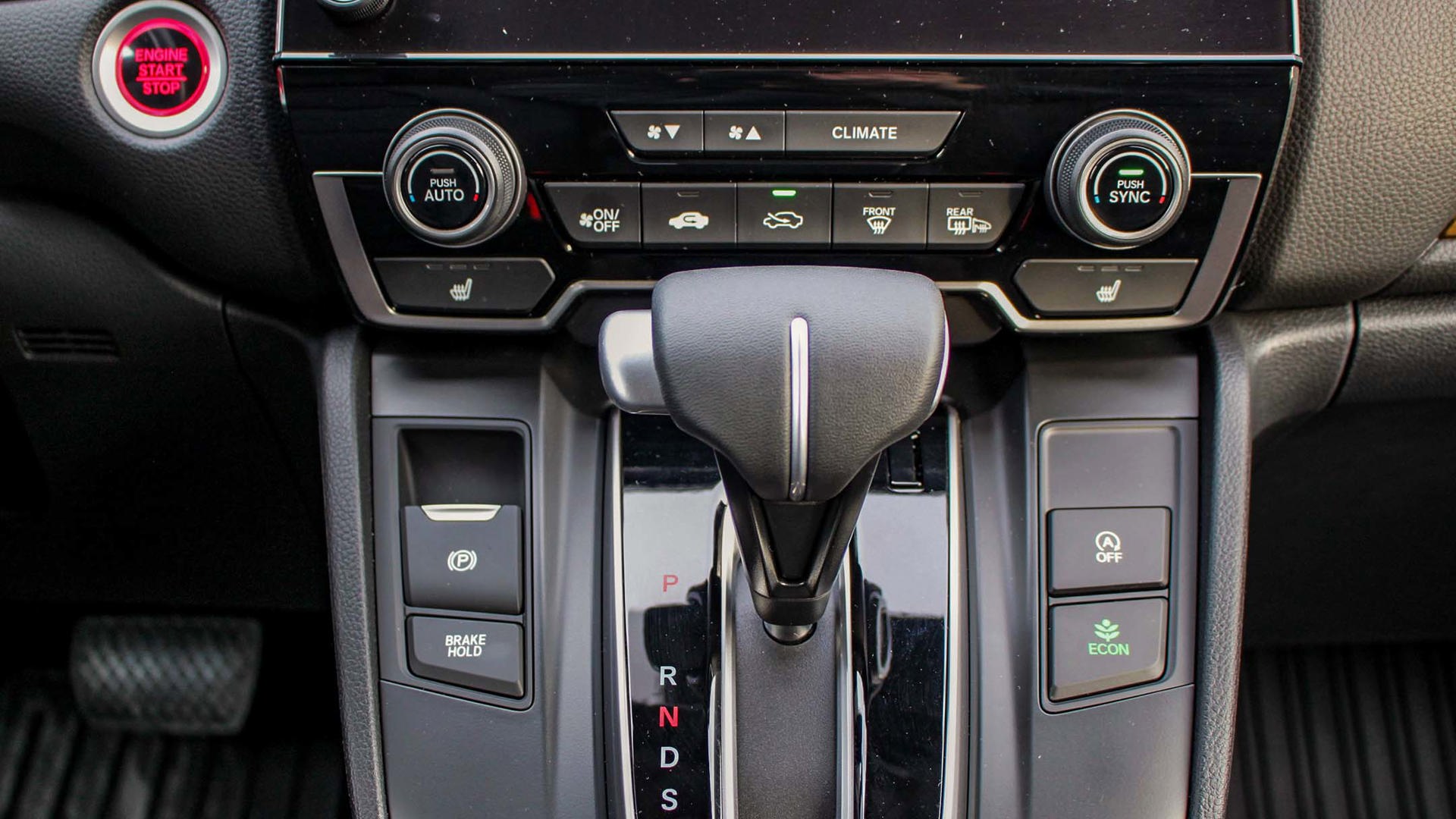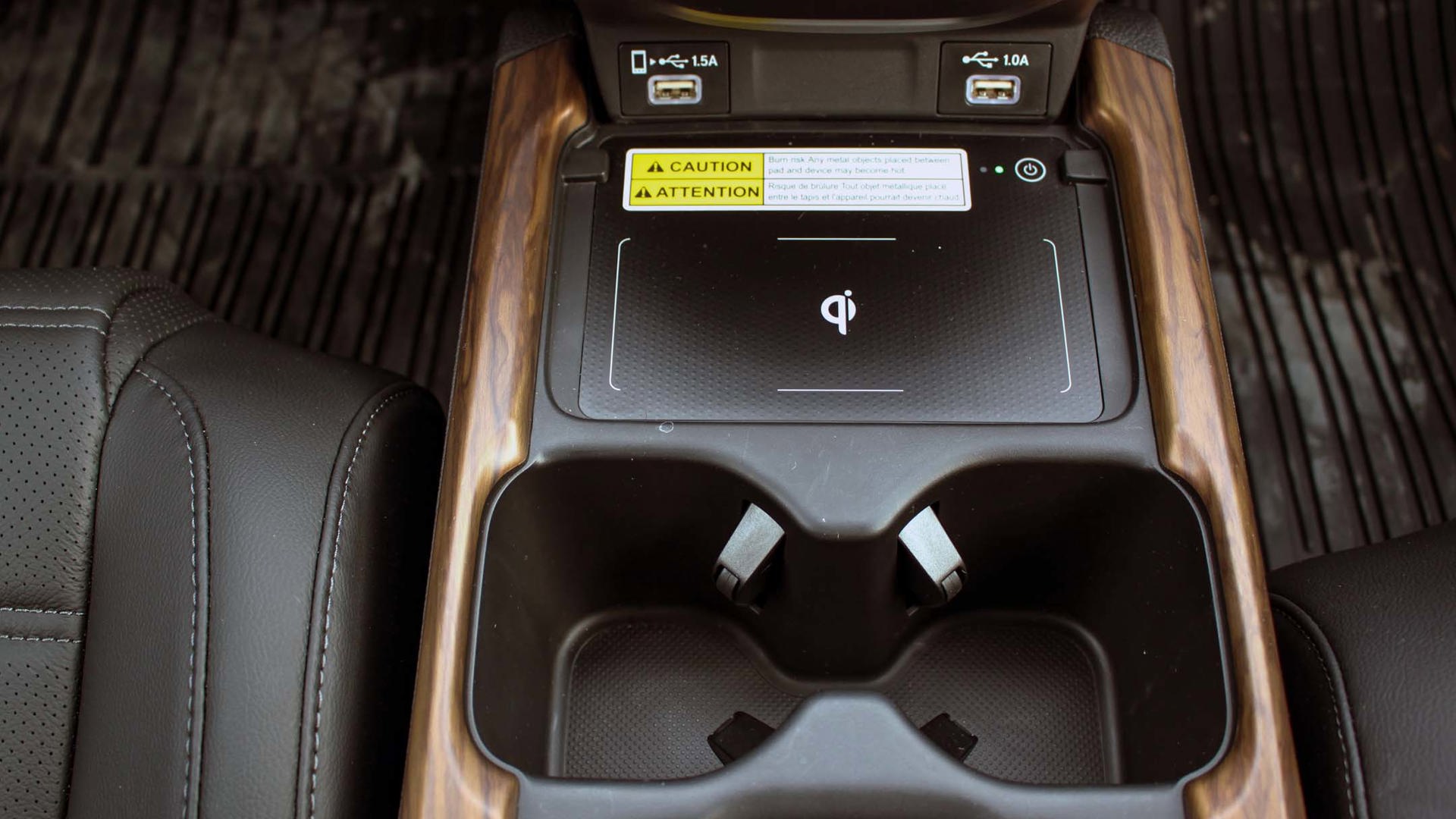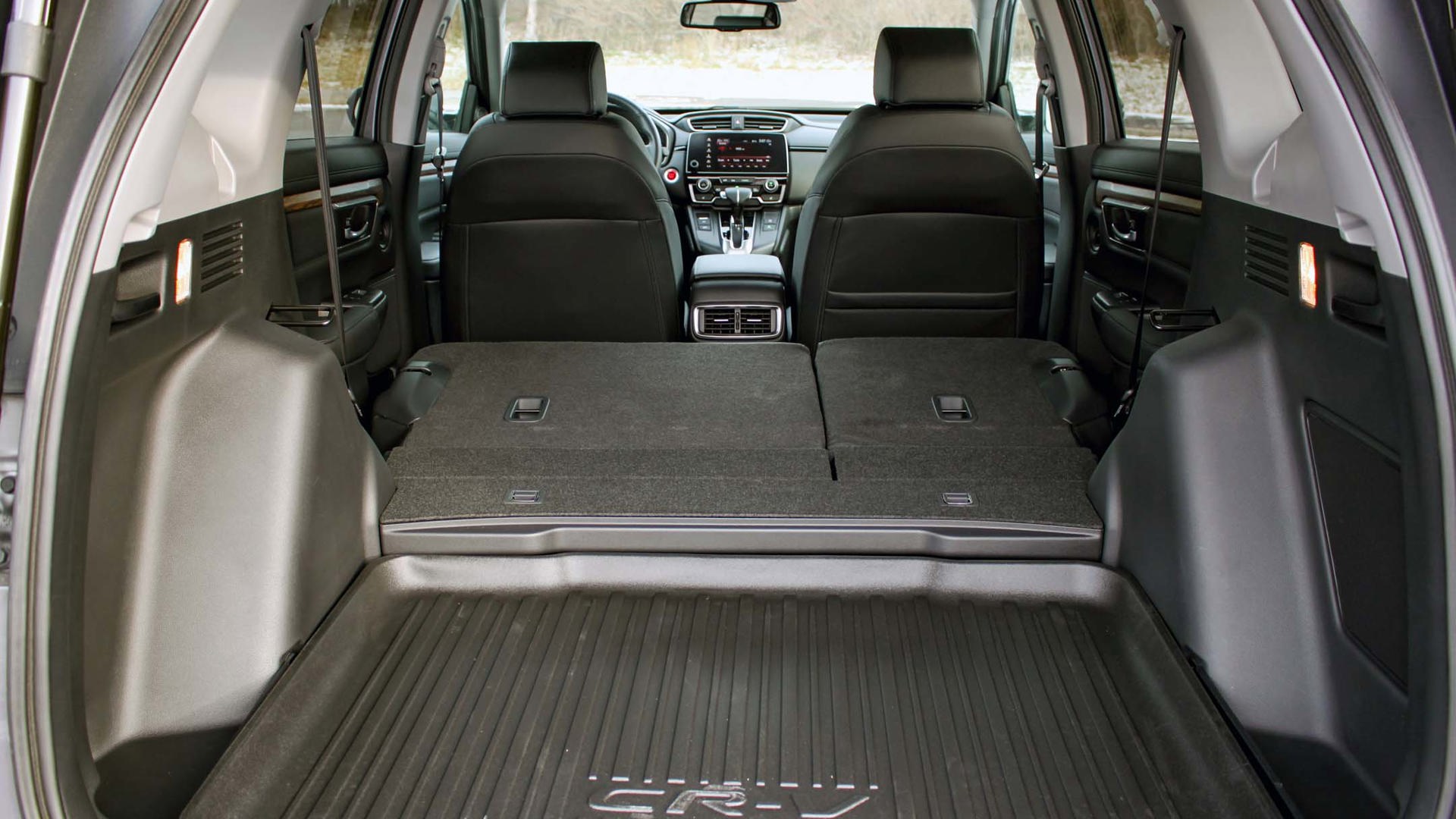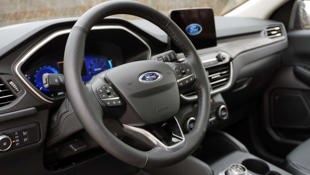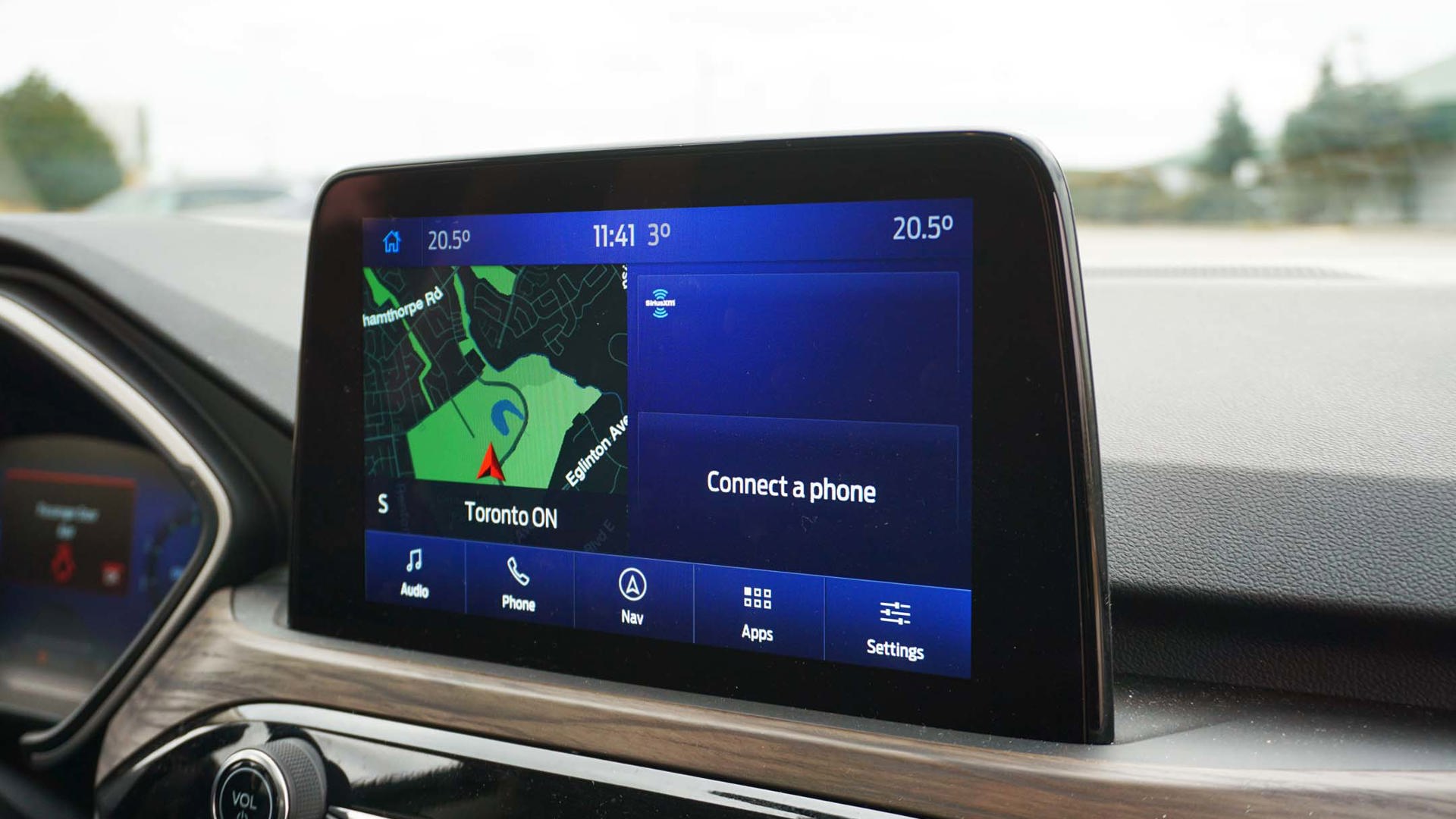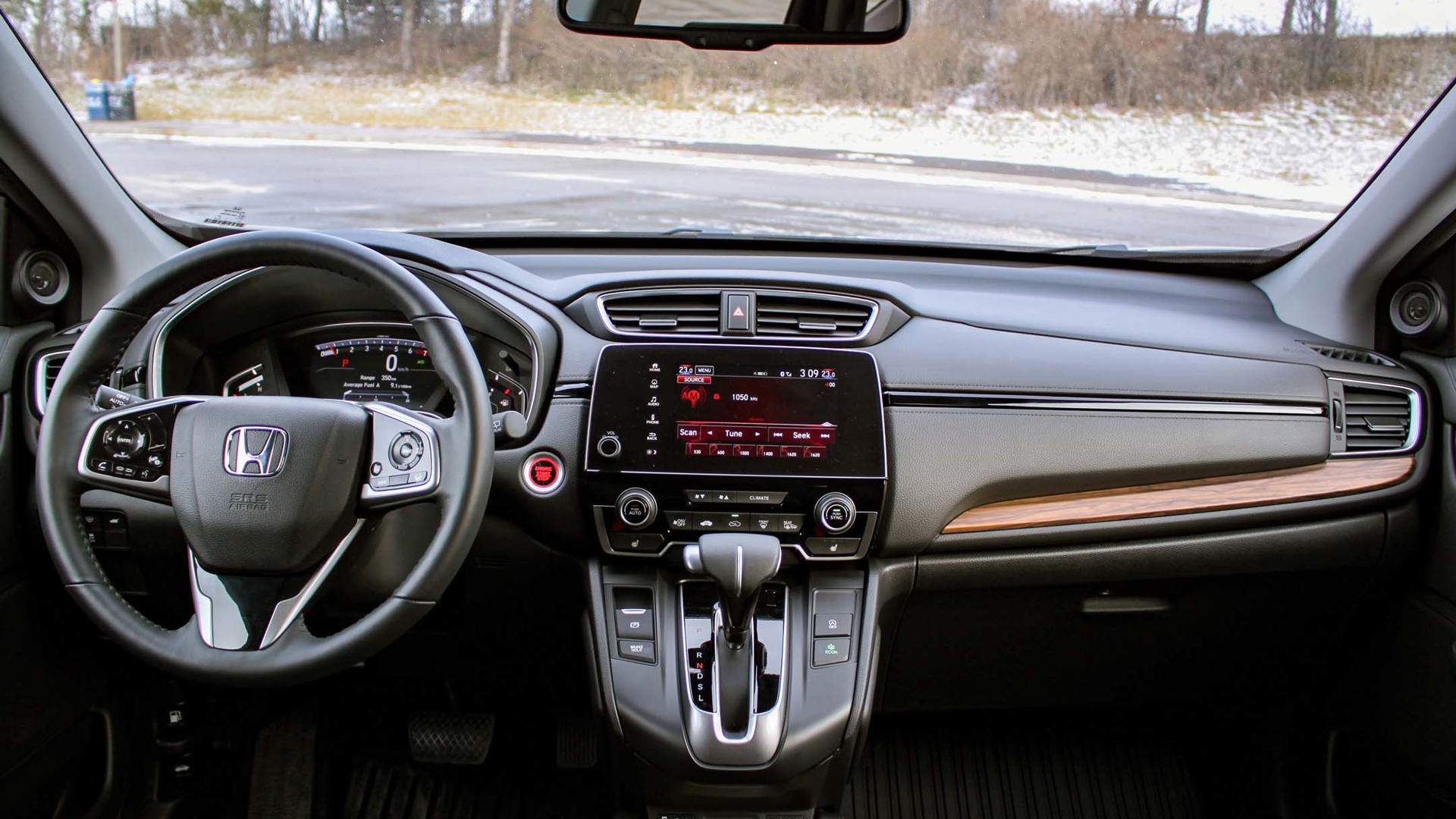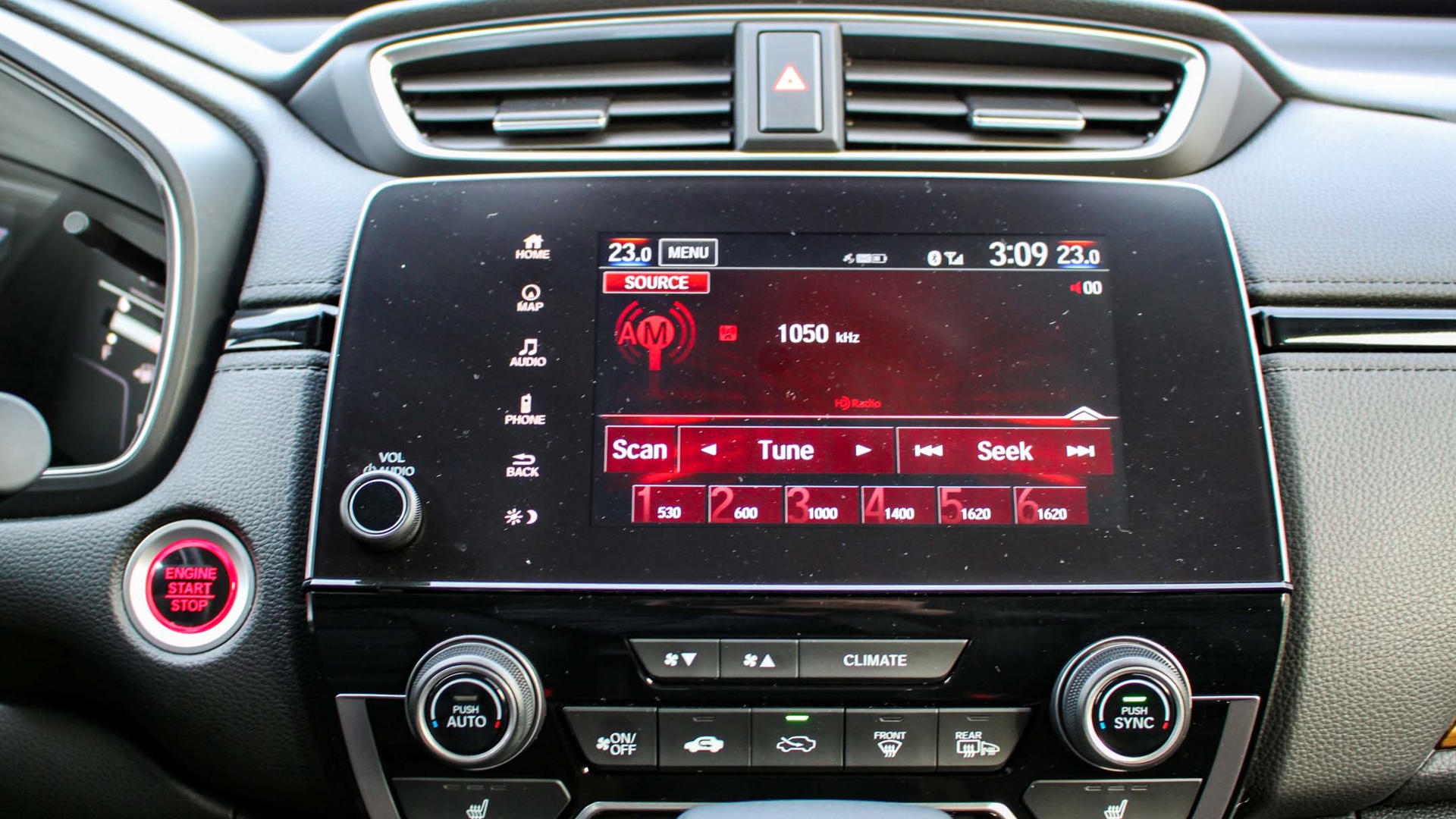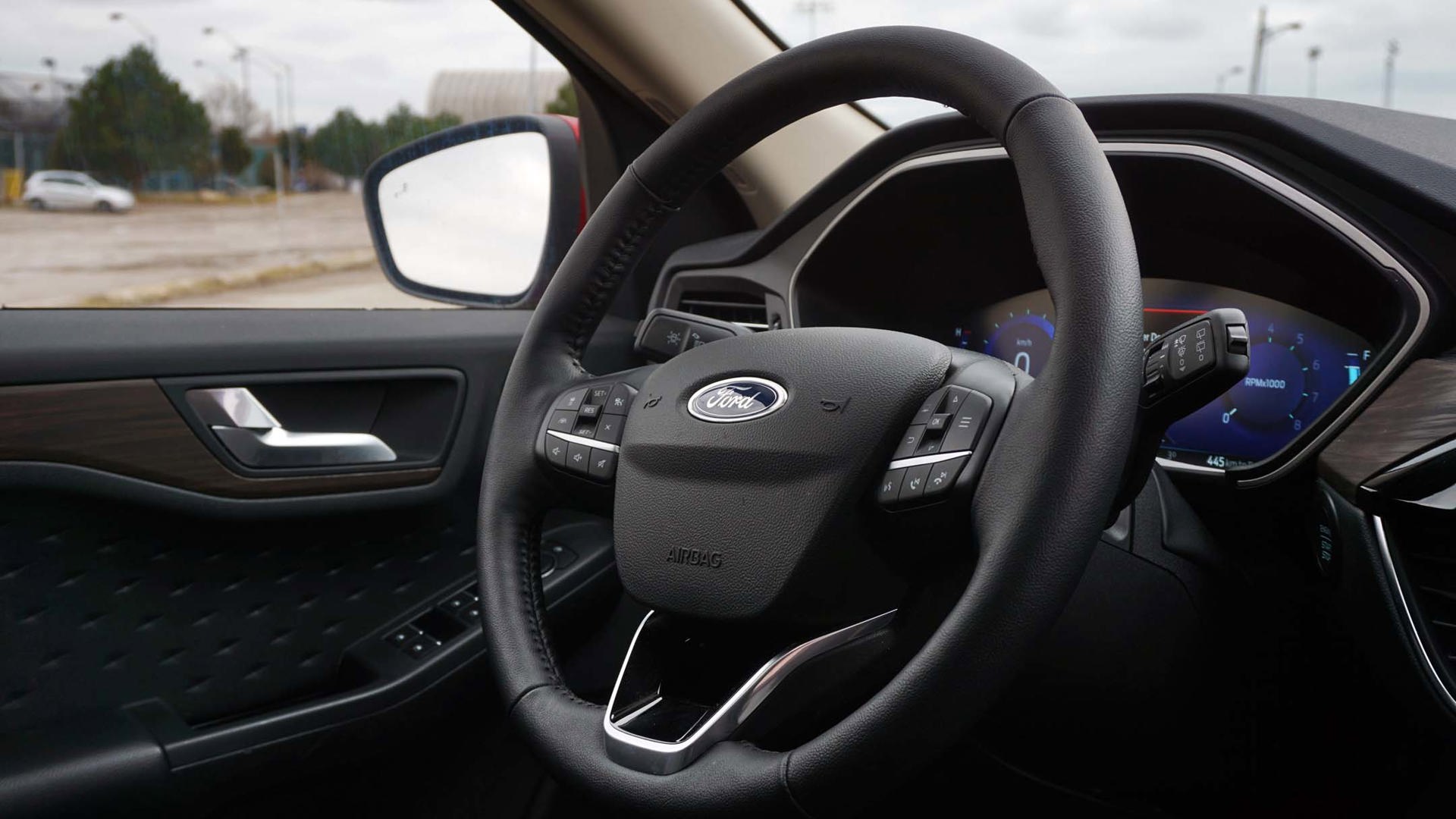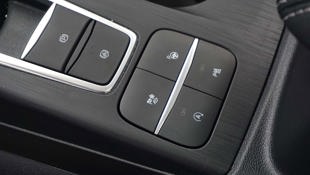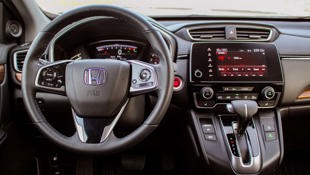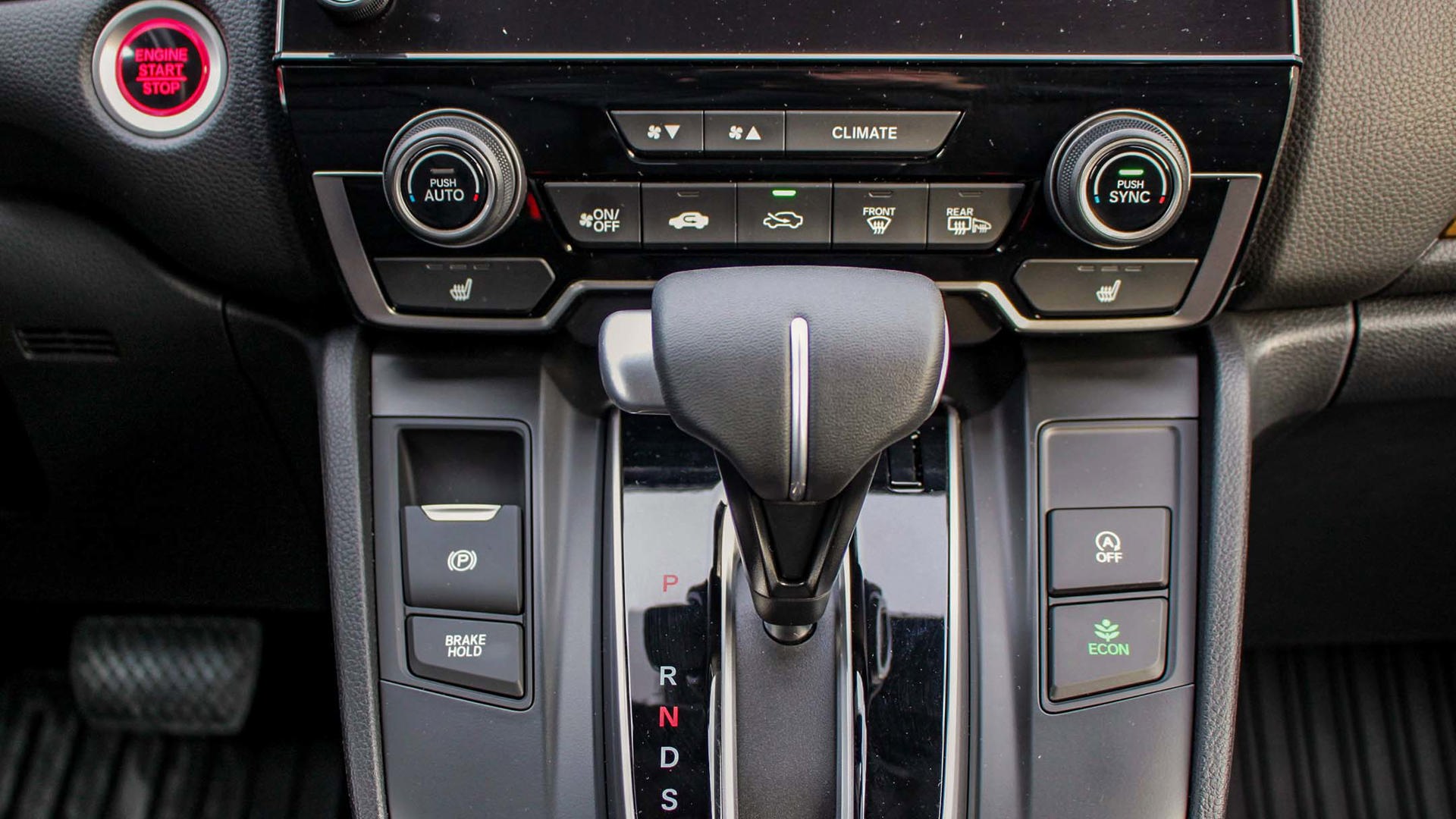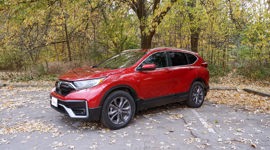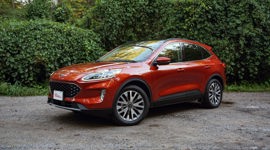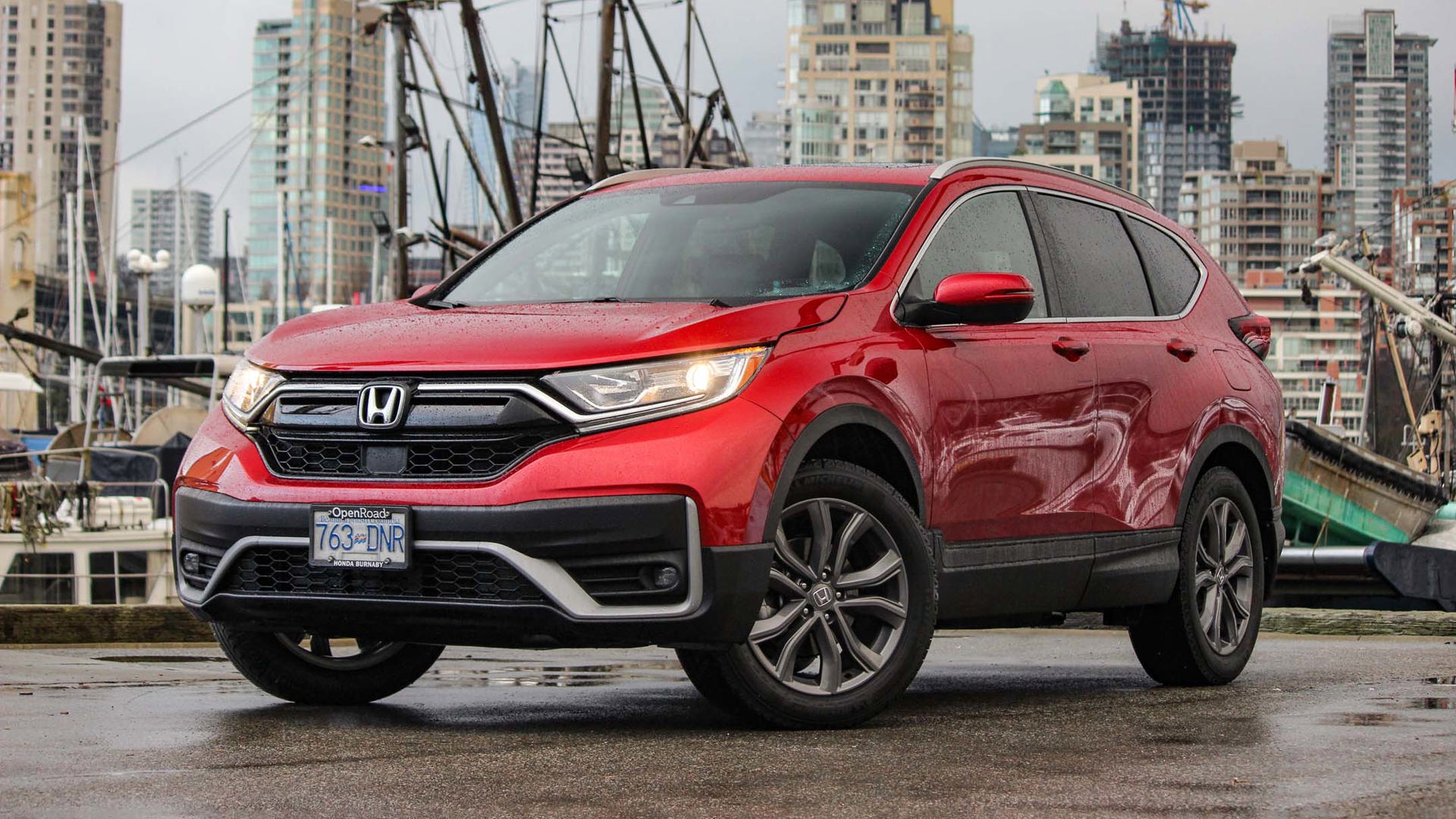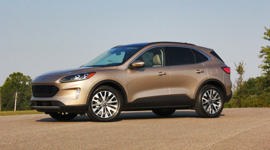Comparison Data
|
2020 Ford Escape Titanium
|
2020 Honda CR-V Touring
|
|---|---|
|
Engine Displacement
2.0L
|
1.5L
|
|
Engine Cylinders
Turbo I4
|
Turbo I4
|
|
Peak Horsepower
250 hp
|
190 hp
|
|
Peak Torque
280 lb-ft
|
179 lb-ft
|
|
Fuel Economy
10.4/7.5/9.1 L/100 km cty/hwy/cmb
|
8.7/7.4/8.1 L/100 km cty/hwy/cmb
|
|
Cargo Space
869 / 1,852 L seats down
|
1,110 / 2,150 L seats down
|
|
Base Price
$40,049
|
$41,090
|
|
A/C Tax
$100
|
$100
|
|
Destination Fee
$1,850
|
$1,815
|
|
Price as Tested
$45,049
|
$43,036
|
|
Optional Equipment
|
It’s a new era for the Ford Motor Company, one with a renewed focus on SUVs, trucks and crossovers.
That means fewer cars – well, none, aside from the Mustang – which is interesting because it’s cars that traditionally dictate the direction of crossovers. After all, isn’t a crossover little more than a blend between a traditional car and an SUV anyway? How will Ford succeed without one half of that equation?
The answer should be found in the new 2020 Escape, the latest compact crossover from the American automaker. In light of its shrinking car lineup, Ford has stuffed the Escape full of more choices in engines, trim levels, and features than before. And on a superficial level, it looks good.
But to know for sure we first need context and competition. That’s why we brought out the 2020 Honda CR-V. The Honda is always a popular choice in this class, and the reasons are obvious: it’s spacious, efficient, and easy to live with. But the CR-V is feeling a little dated these days, and it’s limited in a few ways – namely when it comes to powertrain choices. The CR-V and Escape represent a strong contrast, with one feeling brand new – albeit very different – and the other being familiar yet dated.
Styling
The Escape has a unique take on crossover proportions, with a more bubbly, almost egg-like profile. It is the future, after all, and the Escape doesn’t look far from the transportation pods promised to us in our favourite sci-fi stories. It’s a clean design, and one that will age well, but it’s not exactly sexy. Then again making a statement isn’t really the point of these compact crossovers. Instead, they need to be practical, safe, and efficient, with some good value to boot. If they look sharp, too, it’s a bonus.
The interior of the Escape is a bit of a mixed bag. A few too many hard plastics bring down the vibe, but the controls are nicely laid out and the large infotainment screen is front and centre. Stylish isn’t the word to describe the Escape’s cabin, but it gets the job done and adds a bit of flair while doing so.
The CR-V isn’t very different. The exterior styling is a result of Honda’s current design language, meshing the brand’s conventional car design with that of its larger trucks and SUVs. Personally, I prefer the styling of the Passport and Pilot, but tastes vary.
Like the Escape, the interior of the CR-V is a bit bland. The plastic trim painted to look like wood comes across as especially cheap in the Honda, but I do appreciate the airy environment in the CR-V thanks to its tall and wide windows. It definitely feels like there’s more space inside than something that’s classified as a compact.
Honda CR-V Styling: 6.5/10
Ford Escape Styling: 6.5/10
Safety
The new Escape offers a significant amount of safety technology, but only some of it is standard like it is in the Honda. Every Escape comes with automatic high-beams, blind-spot warning with cross-traffic alert, lane-keep assist, and pre-collision assist with automatic emergency braking. The upgrade package that was included on our Titanium model features adaptive cruise control, rear parking sensors, lane-centring assistance, and automated parking functionality.
Fortunately, we didn’t need to put any of the Escape’s collision avoidance technology to the test,, but the Insurance Institute for Highway Safety (IIHS) has tested the vehicle and awarded it with a Top Safety Pick rating – the second-highest possible.
The CR-V gets the brand’s suite of advanced safety equipment standard. Automatic high-beam assistance, forward collision warning with automatic braking, lane-keeping assistance, and adaptive cruise control are all included. Our tester includes blind-spot monitoring and rear cross-traffic warning, too. However, even with all this technology, the IIHS has tested the CR-V and found it worthy of the same Top Safety Pick rating.
Honda CR-V Safety: 7.5/10
Ford Escape Safety: 8/10
Practicality
Space and practicality are usually among the top priorities for buyers in this class, and the CR-V delivers high marks. Seats up or down, the CR-V has a significant amount of space for passengers and their stuff. Behind the second row of seats is 1,065 L of storage, and when you fold that there’s a total of 2,146 L. This is simply class-leading, and the CR-V is very practical in other ways, too, such as the rear doors that open up almost a full 90 degrees to make loading kids much easier.
The Escape isn’t quite as spacious, with 974 L behind the second row and 1,851 L when the seats are folded. This is noticeable, but it’s not like the Escape isn’t up to the task of a weekly grocery run – or more. One added benefit in the Escape is that the second row can slide forwards or backwards in upper trims to maximize passenger legroom or cargo capacity as needed. Unfortunately, when the seats are moved forward, there’s a large gap in the cargo area where things can fall through.
Honda CR-V Practicality: 9/10
Ford Escape Practicality: 7.5/10
User Friendliness
The CR-V is an easy vehicle to drive and get accustomed to thanks to its simple layout and high seating position. There is plenty of glass and visibility is good, making it easy to drive and park. However, the vehicle’s infotainment system is a bit clunky and the touchscreen is slow to respond. There is Android Auto and Apple CarPlay support, which helps with familiarity. Additionally, the vehicle’s wireless phone charging pad lacks any support, and a bump or corner can send your phone sliding off the charging area.
I prefer the Escapes cabin, as it’s easier to use and figure out. The controls are all smartly laid out, nothing important is hiding behind a menu, and if they are, the infotainment system is bright and quick to respond. I will admit that the visibility in the Escape is slightly worse than the CR-V, with smaller windows and thicker pillars, but it isn’t a deal-breaker.
Honda CR-V User Friendliness: 8/10
Ford Escape User Friendliness: 8.5/10
Features
Both vehicles are very well equipped. The CR-V Touring features four heated seats, a heated steering wheel, dual-zone climate control, a panoramic sunroof, rain-sensing wipers, a wireless phone charger, an integrated garage door opener, as well as a 331-watt sound system and built-in Wi-Fi hotspot technology. The CR-V is missing a few standout features like the parking assistance, ventilated front seats, and head-up display found in the Escape, but the Ford doesn’t have heated rear seats, something the Honda does.
The Ford Escape Titanium we tested featured a large digital dashboard, heated seats in the front, a heated steering wheel, a head-up display, a panoramic sunroof, a universal garage door opener, rain-sensing wipers, and an automatic parking system. The upgraded sound system features 10 speakers.
Honda CR-V Features: 7/10
Ford Escape Features: 8/10
Power
The CR-V is available with only one engine: a 1.5L turbocharged four-cylinder that makes 190 hp and 178 lb-ft of torque. It’s paired to a continuously-variable transmission (CVT) and an all-wheel drive system. It never feels fast or fleet-footed, and the CVT can complain in high-speed driving.
The Escape offers a few more choices in terms of powertrains, as base models come with a 1.5L turbocharged four-cylinder that makes 181 hp and 190 lb-ft of torque. There is also a hybrid offered with 200 hp and 155 lb-ft of torque, and a plug-in hybrid model coming soon with 221 hp. The model we tested featured the 2.0L turbocharged four-cylinder with 250 hp and 280 lb-ft of torque. This is paired with an eight-speed automatic and features all-wheel drive as well.
It should go without saying that the Escape is faster on the road than the CR-V, but that may be understating things. The Escape feels significantly more responsive, except for a slight hiccup when changing gears from first to second. Ford will likely release a transmission tune to smooth this out and reduce complaints. Besides this one bit that could be refined, the Escape has a fantastic powertrain and one that’s among the best in the segment.
Honda CR-V Powertrain: 6/10
Ford Escape Powertrain: 9/10
Comfort
Its smaller proportions and perky power plant give the Escape an attitude that’s slightly on edge. It’s sportier feeling than the CR-V, which is fine if you’re after responsiveness, but in this class, tame driving dynamics help with a more serene road trip. The Escape has a slightly stiffer suspension, heavier steering, and has a louder cabin than the CR-V, which will impact just how comfortable the vehicle feels on the road. Despite its slow demeanour, the CR-V is a comfy road cruising crossover, and that is tough to beat.
Honda CR-V Comfort: 7.5/10
Ford Escape Comfort 7/10
Driving Feel
The CR-V is slow, and has a CVT that’s eager to groan and buzz, making it far less enjoyable to drive. But as a vehicle you can jump into and drive, it’s hard to beat. Steering and handling are numb but work as advertised. The vehicle performs all the duties asked of it within its limitations. Good visibility helps it feel safe and secure on the road.
The Escape is a bit more enjoyable to drive, with better road feel and heavier steering to give a sportier feel. The powertrain is the highlight of the vehicle, and it helps the crossover feel more agile and even a bit smaller. Of course, it’s about 100 mm shorter in overall length than the CR-V, which helps with that impression.
Honda CR-V Driving Feel: 6/10
Ford Escape Driving Feel: 7.5/10
Fuel Economy
With less power and a smaller engine, the CR-V is the more fuel-efficient vehicle of these two, rated 8.7 L/100 km in the city, 7.4 on the highway, and 8.1 combined, according to Natural Resources Canada (NRCan).
The 2.0L turbocharged Escape runs 10.4 in the city, 7.5 on the highway, and 9.1 L/100 km combined. Those looking for better fuel numbers in an Escape will have to go with another powertrain; either a lesser-equipped model with a 1.5L rated at 8.3 L/100 km combined, or a hybrid model good for 5.9 L/100 km. We’d recommend the latter.
Honda CR-V Fuel Economy: 8/10
Ford Escape Fuel Economy: 6/10
Value
The Escape Titanium features an as-tested price of $45,049 including destination and delivery and other superficial options like floor mats ($150) and cargo mats ($150). This is kind of pricey, but the CR-V isn’t far behind. The Touring model comes in with a price of $43,036 with freight and fees.
Buyers in this class who are looking for excellent value will appreciate the CR-V’s lower price tag and better fuel economy. It’s also much more spacious. However, it has very few amenities that help it stand out above the Escape. Buyers looking to check every box on their shopping list might be willing to pay more, and getting features like a head-up display and automatic parking helps the Escape feel like it’s worth the extra cost.
Honda CR-V Value: 8/10
Ford Escape Value: 7/10
The Verdict:
This leaves us with a tale of two very different crossovers. Family-friendly and spacious, the CR-V is for the buyer looking for solid point-A-to-B transportation for their family. The lower asking price and fuel costs, as well as the standard safety equipment, will help it gain fans, too. But for buyers looking for an all-around better vehicle, the Escape emerges as a winner. It’s more fun to drive, more powerful, and more feature-filled. Those with less of a priority on family-friendly accommodations will find the Escape to be the better purchase, especially as it has more features and powertrain choices.
Honda CR-V Total: 73.5
Ford Escape Total: 75
